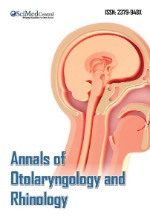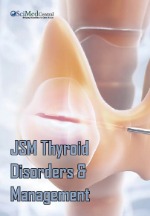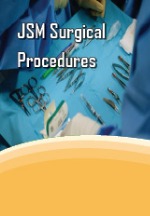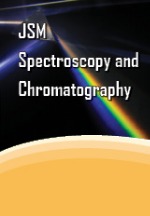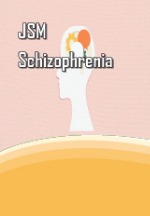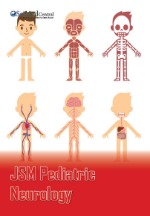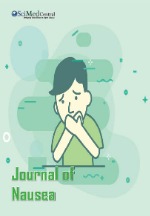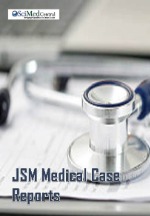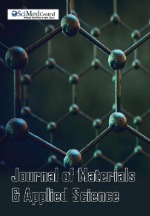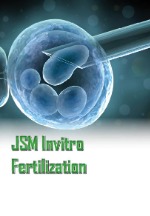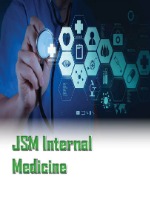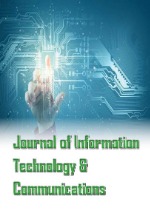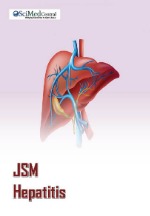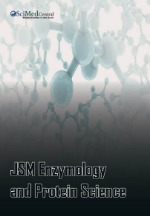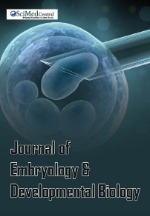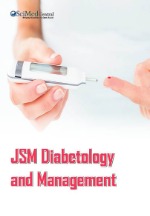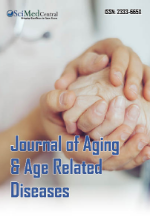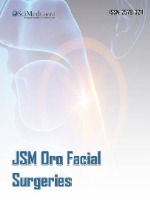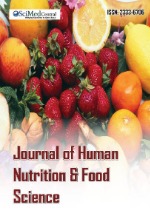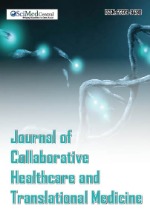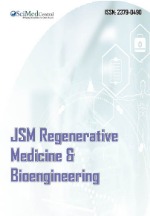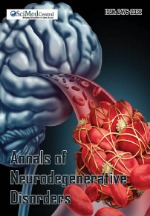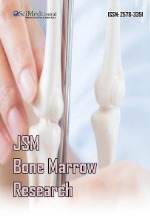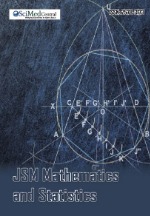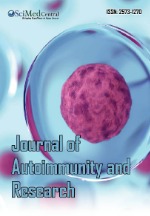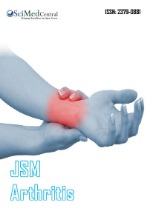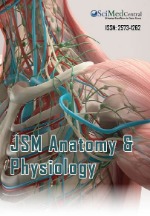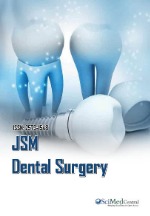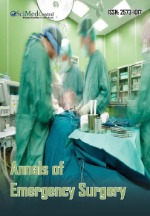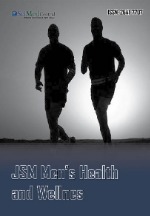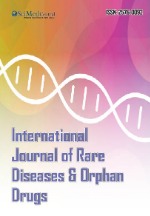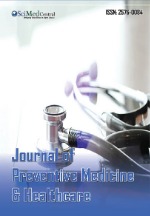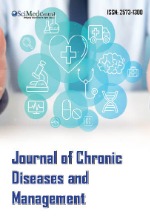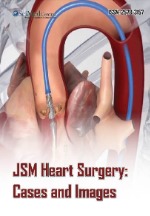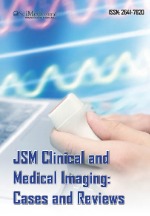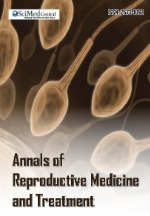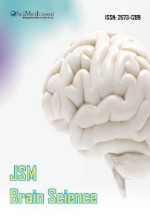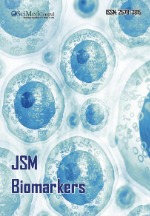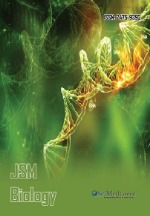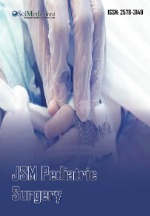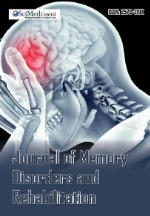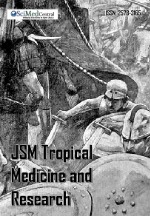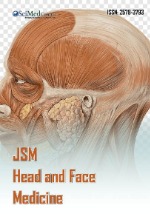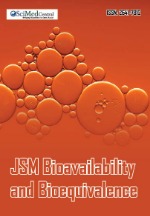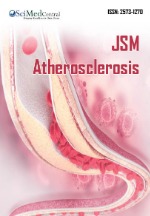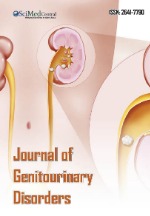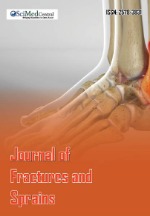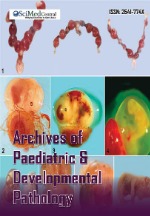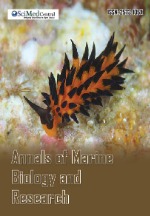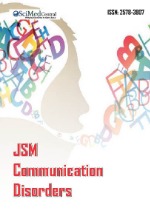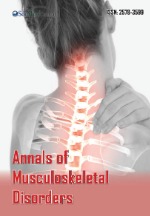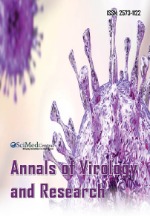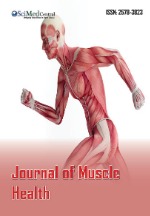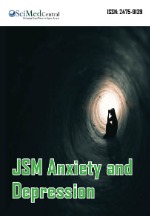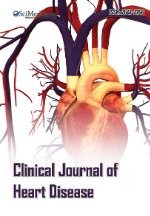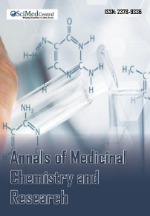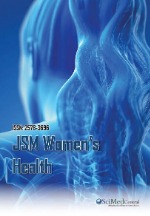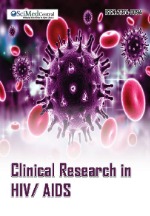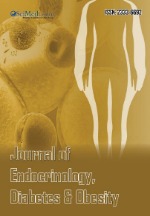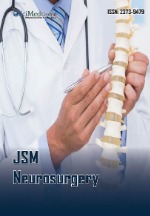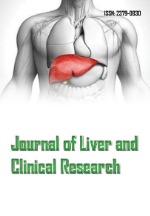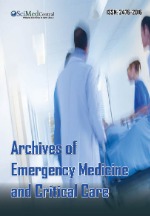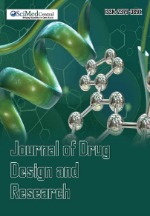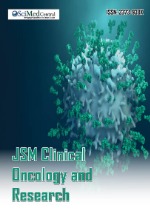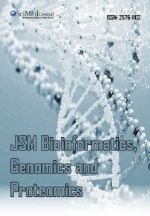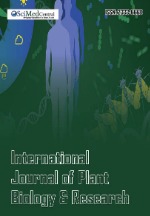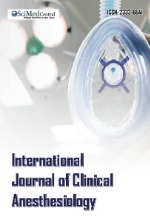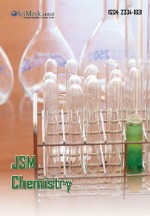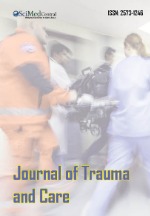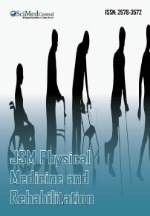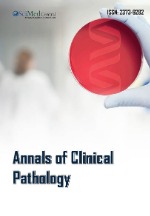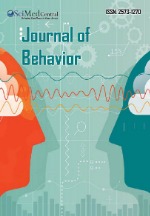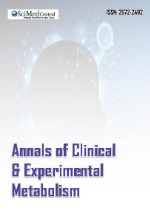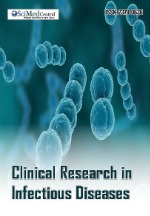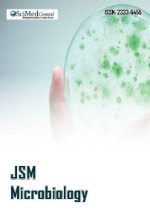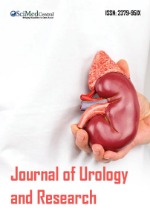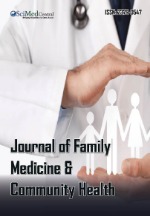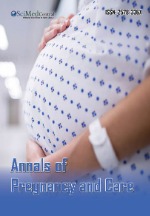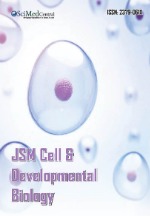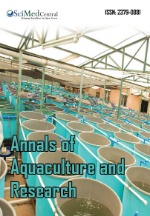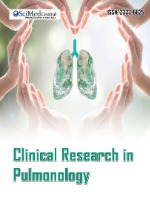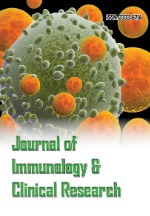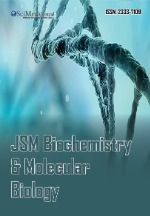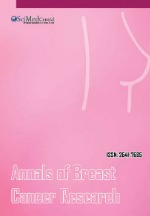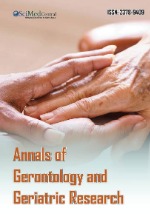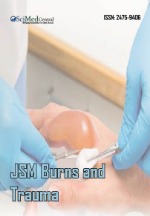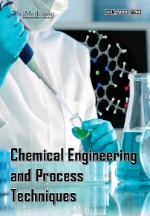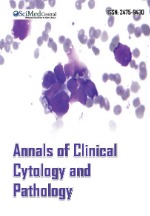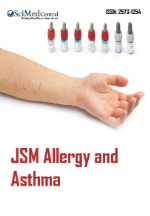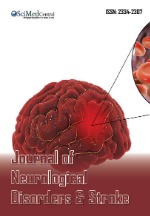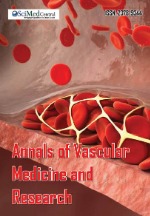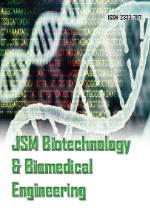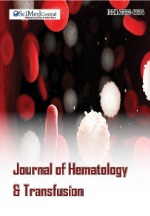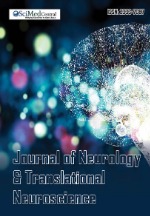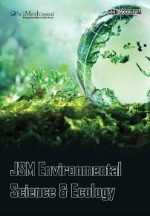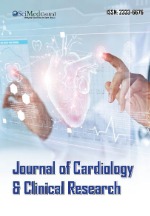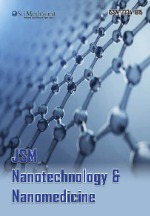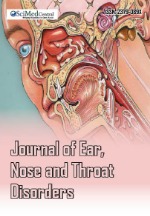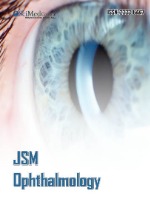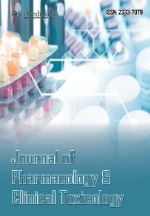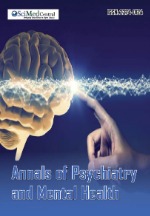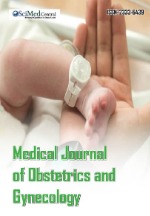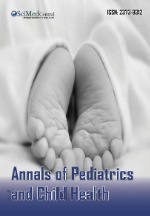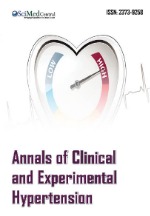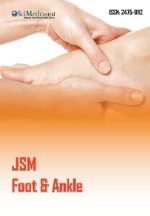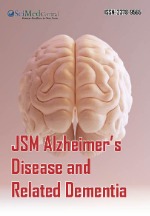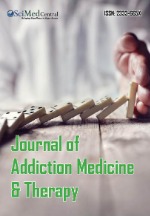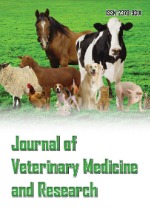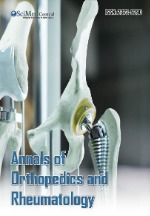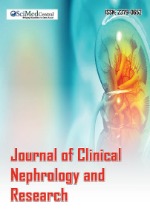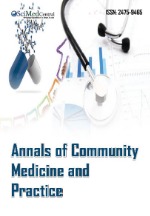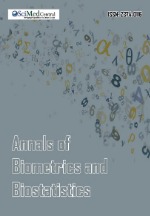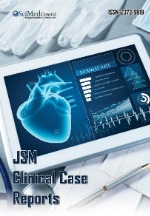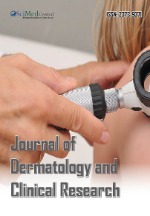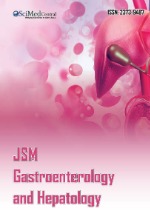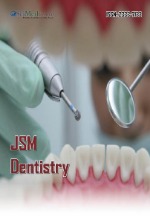A Combination of Physiological Changes Which Causes Autism: Discovery with a Method of Combining Multiple Researches to Determine Non-Infectious Disease Causes
- 1. Independent Researcher, USA
Abstract
Autism Spectrum Disorder (ASD) is a developmental disability characterized by persistent impairments in social interaction and the presence of restricted, repetitive patterns of behaviors, interests, or activities that can cause an array of difficulties in social interaction, communication, and participation in daily activities. The autistic children often don’t speak or have delayed speech, or lose previous ability to say words or sentences. According to USA Centers of Disease Control and Prevention (CDC) a prevalence of Autsim in USA is 1 in 36 children (as 2020). The rate of Autism’s prevalence has grown significanlty over the years from 1 in 150 in 2000 to 1 in 36 in 2020. Currently Autism spectrum disorder has no single known cause.
In this work an author analyses causes of Autism using a novel method presented in article “Method of Combining Multiple Researches to Determine Non-Infectious Disease Causes, Analysis of Depression and Celiac Disease Causes” [1]. The method is using a special algorithm based in math which allows to find disease causes for a specific non-infectious disease using results of multiple researches regarding risk factors of the disease. This method allows to combine dozens of such researches together with dozens of researches on biochemistry and physiology to extract implicit information on the causes of non-infectious disease out this entire research.
The use of method requires to find number of causes for a specific non-infectious disease using a special formula and data on the incidence rate of disease in specific population. These disease causes are two or more physiological changes beyond approximately 1-sigma interval which if they are co-existing long enough must trigger the non-infectious disease (triggering is not optional). After that the method requires to find disease causation factors out of multiple risk factors found for a disease. Only some of risk factors are real disease causing factors. This is achieved using a set of special disease causation criteria discussed in the article above and provided here for a reference as well.
The method often allows to find few dozen of disease causation factors and more for a non-infectious disease out of existing medical research. These disease causation factors all point to the same set of limited number of physiological parameters changes beyond 1-sigma. The number of these physiological changes usually vary depending on the non-infectious disease from a minimum of 2 to a maximum of 6 or very rare more. In this case the few dozens of disease causation factors make changes (we can say “point”) to the same set of 3 physiological parameters (for example).The method then allows to find these physiological parameter changes (which are real cause of the non-infectious disease) using a properties based in math. After this the method allows to determine which physiological parameter of this group is impacted by each of the dozens of disease causation factors previously found. Then method allows to group these factors according to the physiological parameter they impact. The disease causation factors taken out of each group of these factors and combined together will cause a change beyond 1-sigma to all required for disease triggering physiological parameters. These combinations of disease causation factors applied long enough will cause a non-infectious disease. The occurrence of the disease causation factors is random but once they act together the non-infectious disease triggering is a must unless the factors are removed fast enough. Final step of the method is validation of its results using other research or the already discussed disease causation criteria in order to eliminate any errors in steps of the method, which we could potentially make. Once the simultaneously taking place physiological changes causing a non-infectious disease has been found the method allows to build a hypothesis of the disease pathology by using them and “connecting the dots”. The example of this process shown in the work as well. The hypothesis of Autism pathology is proposed as one example of this.
The author then continues an introduction to the method and applying over 34 existing selected studies the author analyses Autism and as a result the work gives the causes of Autism as a set of physiological parameters changes beyond 1-sigma interval (slightly less, actually) and also as a set of disease causing external factors which combinations in an individual must cause Autism. Using the method an author show that Autism has 2 simultaneously acting causes for boys and 3 simultaneously acting causes for girls at present time. For Autism, this explains why girls’ rate of Autism much less than in boys because the more physiological changes are required to trigger the non-infectious disease the less its incidence rate 1. It used to be more physiological changes required to cause Autism in the past, in 1980s and earlier. But some external factors has removed multiple defensive mechanisms by moving some physiological parameters beyond 1-sigma to a new “norm” and left us with only 2 for boys and 3 for girls as it is shown in this work. This removal of defenses has caused a significant raise of Autism in recent years.
The article introduces to the basics of the method, provides required formulas for calculations and then move to a detailed analysis of Autism causes. As the method is novel, the appendix has an analogy to explain the idea of the method at “high level”. The author’s introduction to the method will allow other medical researchers to use their own and existing research to determine the causes of non-infectious diseases as per presented model, using a simple algorithm.
KEYWORDS
- Disease Causes; Autism
- Non-Infectious Disease
- Multiple Research
- Frequency
- Disease Causing Factor
- Prevention
- Root Cause
- Disease Rate
- Physiological Parameter
- Method to find a Cause
CITATION
Olan A (2025) A Combination of Physiological Changes Which Causes Autism: Discovery with a Method of Combining Multiple Researches to Determine Non-Infectious Disease Causes. J Autism Epilepsy 6(1): 1018.
INTRODUCTION
In article [1] “A Connection between Factors Causing Diseases and Diseases Frequencies: Its Application in Finding Disease Causes” [1]. We introduced a model of non- infectious disease. According to this model which is matching to empirical evidence, the non-infectious disease is caused by changes to multiple physiological parameters when their values go beyond 1-sigma interval, slightly less actually. This means a non-infectious disease must occur if 2 or more particular physiological parameters changes beyond 1-sigma exist for while at the same time. Also, based on the model the criteria was introduced to determine if a risk factor is causing a non-infectious disease or not. In order to be a cause of non-infectious disease the risk factor K calculated as (RR - 1) or (OR-1) to be 3.55 ± 50% (or 355% ± 50%) if the factor is causing a change in 1 physiological parameter, and should have value of 19.67 ± 50% (1967% ± 50%) if it is causing a change to 2 physiological parameters beyond 1-sigma. We call these conditions a Disease Causation criteria. The Disease Causation criteria determines whether a factor is one of multiple which are causing disease. The disease causing factor cannot cause a disease as a standalone as per model in article [1] because it is usually changing only 1 physiological parameter out of multiple required. Non-infectious disease, as per the model presented in article [1], is caused by multiple physiological parameters changed beyond 1-sigma. The article [1] introduced a formula to calculate number of non-infectious disease causes if the disease rate (incidence rate usually) is known for the disease in a specific population. The formula is shown below (n is number of disease causes (as number of physiological parameter changed beyond 1-sigma):
(1.0)
In this formula P (D) is usually represented by incidence rate of non-infectious disease (annual disease rate). Using formula 1.0 and Disease Causation criteria it was shown how to find physiological parameters changes which are causing some non-infectious diseases. In this article we introduce a method which is based on this model, which allow researchers to analyze an existing research about a specific non-infectious disease and determine a full set of disease causing physiological parameters for a non- infectious disease in much more complicated cases. Also, a method would allow to map a found disease causing factor to a physiological parameter which is changed by the factor beyond 1-sigma interval. For example, if we know that Diabetes is a disease causing factor for Hypertension there is a need to know which specific physiological factor impacted by Diabetes is really a cause of Hypertension.
There are multiple physiological factors impacted by Diabetes and the method will allow to find a single one out of so many (allows finding “a needle in a haystack”) which is really causing Hypertension. The method we introduce is based in math and those who mathematically inclined can find its foundation in the Appendix of this article. Here we will introduce a basic idea of the method and steps on how to practically use it.
EXPLANATION OF THE METHOD
A method is introducing an algorithm based in math (but not requiring to use it much) which allows to process data from results of existing medical researchers in few steps and produce a new information which consist of disease causes represented by a set of physiological parameters changes beyond 1-sigma (slightly less, actually) and also, a few separate groups of disease causing external factors. These few groups of factors are such that if you take a disease causing factor from each group as a standalone it will not cause a disease but combined together with factors from all other groups must cause a non-infectious disease. Let’s say using the formula for a number of Disease causes (1.0) we found the number of causes as physiological parameter changes beyond 1-sigma. We also found from an existing research a few factors which are really causing a specific disease using a Disease Causation criteria provided. Now we need to determine which specific physiological parameters are really causing a disease. We only know their number and don’t know yet what they are. We know the factors which are causing a change to these physiological parameters and we can use them to find these unknown parameters.
In order to do this we need to list many physiological parameters related to the factor and we can find them from existing scientific research (for example, we can look for all biomarkers of Diabetes and list as many as we can find). Once we list the physiological parameters in the header of some table we need to list the factors found to be causing the disease along a most left column (vertically) of the same table. Based on the researches’ data we already know which physiological parameters are related to those factors causing disease and we mark the intersection between the factor and the related parameter with letter “R” (or other letter). Please note, we use a term “related” as it is unknown if the physiological parameter change is a cause a disease or not yet and all we know is that its change is present if the factor is present. Now we start analyzing which factors are having same parameter in common and we will call it an intersection if unrelated disease causing factors A and B both having the same physiological parameter changed. We need to find all these intersections. Those intersections will be a superset of the physiological parameters which are causing a disease. The details of why this happens are provided in a detailed math explanation in this article. Here we can say that a match in just one physiological parameter changed (important: we looking for a match by name, not by value) between 2 different factors is not a random coincidence but a pattern. This pattern is determined by a fact that factors are causing a change of the physiological parameter beyond 1-sigma interval (or sometimes by other reasons explained later).
Here is a simplified explanation how the method works. Suppose there is a non-infectious disease with 2 unknown disease causes (quantity of 2 we have determined using formula 1.0). Suppose we determined already 2-3 disease causing factors (we can do it using Disease Causation criteria). Each disease causing factor is changing physiological parameters randomly beyond their original (or normal) range which means a quantity of physiological parameters changes is random, the parameters’ names, values are different as well, etc. The physiological parameters changes for a disease causing factors are random as they cannot be determined unless we do an experiment and determine what they have changed under influence of each of these disease causing factors (we assume we do an experiment first time). Note, the physiological parameter changes are random for a disease causing factor but they may be almost the same for different people impacted by this factor.
Suppose via the experiments we found that a disease causing factor 1 has changed 20 different physiological parameters beyond their original (or normal) range and a disease causing factor 2 has changed 50 different physiological parameters beyond their original (or normal) range. We just explained that only 2 unknown physiological parameters are really causing this disease. In order to determine their names we use a fact that due to random “selection” of physiological parameters out of so many (few thousands and more exist in human body) by unrelated disease causing factors, a match by their names and values between these 2 groups of physiological parameters practically is not possible by accident (this is shown mathematically in this article). If we find a match of physiological parameters by name it is a pattern under these specified conditions, it is not random. For example, if one type of disease causing factors (suppose a chocolate consumption) is causing a change in hemoglobin levels and a totally different disease causing factor (suppose a long exercising) is causing a change in hemoglobin levels as well then it is a pattern under these specified conditions. It becomes a pattern which we are interested in because it happens between groups belonging to 2 different disease causing factors.
We know these 2 disease causing factors are impacting same physiological parameter, meaning a parameter with the same name. For this reason, in order to find a pattern (in our case a disease causation physiological parameter) we need to find a place where 2 physiological parameters changes in both groups are the same by name (important: not by value) for these 2 different disease causing factors. This place where 2 disease causing factors have the same name of physiological parameter changed beyond original (or normal range) we call “an intersection”. If we found such a match between physiological parameters by name (important: not by value) we found a pattern - a physiological parameter which is causing a disease. See a (Figure 1).
Figure 1: (Disease with 2 causes, as per formula (1.0): Disease causing factors are causing multiple physiological changes. Disease causing physiological changes are common for Factors 1 and 2, for Factors 3 and 4.We find them by determining an intersection in a physiological parameter).
Also, in Appendix 1 we provide a simple analogy which could help to clarify or visualize the explained concept further. When we find all these intersections we will find a list (or a matrix) of the parameters which are superset of physiological parameters which changes go beyond 1-sigma and are causing a disease. As there might be other patterns causing a match in parameters the number of parameters can exceed the number of parameters we determined via Number of Disease Causes formula (1.0). We will need to eliminate other parameters based on the methods provided in this article to get a final set of Physiological Parameters which changes go beyond 1-sigma (actually slightly less).These changes when they are present at the same time must trigger a disease. The illustration of this process shown on (Figure 1).
Once we know the final set of these physiological parameters and as we know up front which factor is related to which physiological parameter we can find which specific physiological parameter is impacted by the specific factor in such a way that a parameter goes beyond 1-sigma interval. In other words we get an understanding that a factor is impacting a specific physiological parameter. Now, if an individual is affected by a set of factors, which are, causing a change in all these physiological parameters required then the individual will get sick after sometime unless the harmful factors are removed fast enough. This knowledge can help to prevent a disease in the individual or help potentially cure it or reduce severity of the disease.
USING A METHOD IN PRACTICE
In a nutshell, in order to use this method to find a set of physiological parameters which are causing a disease next steps should be taken:
1. Find the number of causes (as physiological parameters changes) for the non-infectious disease using a formula for a disease causes (1.0) [1].
2. Find as many as possible, the factors which are causing a disease using a Disease Causation criteria on existing experimental data or new research (see our article: “Olan A. A Connection between Factors Causing Diseases and Diseases Frequencies: It’s Application in Finding Disease Causes. J Clin Trials. 2023; 13: 533 [1].
3. For each factor found, you need to list as many as possible parameters related to it in some table. For example, if a factor is a consumption of some food then include which nutrients, chemicals it contains including harmful ones as per existing researches. If a factor is a disease then list, which physiological parameters are known to be impacted one way or another as a symptom, a cause, etc. You need to place one factor vertically and appropriate impacted physiological parameters horizontally (in the table’s header) in this table. The column where a factor is related to a physiological parameter can be marked with cross “X” or letter “R”
4. If the factor is by itself a physiological parameter it can be taken as one of the physiological parameters you are searching for during this step in the method. It can be corrected with next step if needed.
5. Now, you need to find where the columns which contain physiological parameters are causing a crossing between factors. This means you need to look for a cross (“X” sign) in the same column for 2 or more factors in the table. We are finding which same (by name, not value) physiological parameter is changed by 2 disease causing factors.
6. Build a list or a matrix Pm consisting of the parameters which are causing intersections. For example, like Pm: {r1, r19, r23, r45}. In practice Pm can look like Pm = {“Blood Pressure”, “Estrogen Level Change”, “Oxygen level”, “ROS level”}.
7. Eliminate redundant physiological parameters from matrix Pm if required (as per rules provided in this article). If the number of calculated parameters per formula (1.0) is less than number of parameters found via analysis of intersections then the redundant parameters need to be eliminated. The number of parameters found via analysis of intersection in a table should match to the number calculated via a formula (1.0) or be less if not all parameters can be found due to a lack of experimental data, etc. Also, if some physiological parameters found as result of analysis of intersection in a table are causing some disease causing factors to change more parameters then predicted by disease causing criteria then some physiological parameters may need to be eliminated as well. The disease causing factor can usually change only 1 or 2 physiological parameters beyond 1-sigma interval (slightly less than this interval, actually).
8. Verify the results of using algorithm by checking if there are appropriate experimental data consistent with the physiological parameters found. Also, you can verify if a physiological parameter found satisfies a Disease Causation criteria above if there is any research on the risk of this parameter
You can see that a method allows to use a simple algorithm on a set of existing experimental data in order to determine disease causes (as a set of physiological parameter changes beyond 1-sigma interval) and then verify the results using other research (which was not used doing steps of the algorithm) either by using Disease Causation criteria or by simply checking how this research is consistent with results of your findings.
Example of Method’s Application for a Disease with 2 Causes
Let’s look at hypothetical disease with 2 causes and apply to it the method described above. We created a Table 1.
Table 1:Areasingrayarewhereanintersectionshappeninparametersr12,r20andr17accordingly.AreasurroundedbyboldframeisafinalsetofparametersformatrixPm
|
Factors |
Physiological Parameters - Entire Set for ALL FACTORS as R1, R2, ... Rn |
|||||||||||||
|
causing Disease |
||||||||||||||
|
|
r12 |
r20 |
r2 |
r8 |
r17 |
r75 |
r34 |
r56 |
r39 |
r12 |
r55 |
r23 |
r78 |
r11 |
|
Factor 1 |
|
|
x |
|
x |
|
|
|
x |
x |
|
x |
|
|
|
Factor 2 |
x |
|
|
|
x |
|
|
x |
|
|
x |
|
|
x |
|
Factor 3 |
x |
x |
|
|
|
|
x |
|
|
|
|
|
|
|
|
Factor 4 |
x |
x |
|
|
|
x |
|
|
|
|
|
|
x |
|
We can see in Table 1 that all physiological parameters are listed on the top and all found from the experiments Factors which are causing this hypothetical disease are listed on the left. Now, we can see that parameter r20 is an intersection for Factor 3 and Factor 4, param r12 is an intersection for Factor 2 and Factor 3 and Factor 4. A param r17 is an intersection for Factor 1, Factor 2. We can build our matrix Pm: {r12, r20, r17}. In practice, this matrix may look like a list Pm: {‘Blood Pressure Change’, ‘Oxygen Level Change’, ‘Estrogen Change). This matrix contains physiological parameters which changes beyond 1-sigma are causing a disease if present at the same time.
Criteria for Choosing Intersections of Physiological Parameters
As we could see there is a very small chance of random intersection of physiological parameters belonging to 2 different factors and also, there are cases when more parameters found then determined by disease causation criteria. In order to select those parameters which are really causing a disease we need to use these criteria belo
1. We need to check if factors which are impacting physiological parameters found to be intersections are belonging to same type of disease or they are very similar in nature (like BMI impact and high weight impact) and we can ignore them as the intersection is most likely due to similarity.
2. Make sure a factor is causing a change the physiological parameter which intersect (not opposite) as the factors should cause a change in physiological parameters.
3. Make sure both factors are causing change in the physiological parameter which intersect or the intersection is not valid.
4. If a factor causing insignificant change (less 1-sigma interval) in physiological parameter then the parameters need to be ignored as a point of intersection with this factor. The factors as we discussed need to make change in physiological parameter so its value will be beyond 1-sigma interval.
5. Make sure the physiological parameters changes in the point of intersection happen in the same direction (either increase or decrease). If the changes move in different directions then the parameters are considered as 2 different parameters and not as one.
6. The intersection of parameters for a similar factor is not considered correct intersection (as it is the same factor, for example Increased Weigh and BMI over 30 are similar factors).
7. If the experiment found that a factor which causing a disease is impacting 1 physiological parameter but the factor consists of combinations of 2 separate factors (for example observation was done for presence of diabetes or obesity together so they work as a factor) then the combined factor can be allowed to have 2 intersections despite having impact on 1 physiological parameter as one of the parts of the factor could be present at the time (for example either a diabetes causing 1 change in physiological parameter or obesity causing the change in another physiological parameter).
8. Element cannot cross itself, for example if factor is IgA and physiological parameter IgA then they don’t create a crossing. Usually, if a factor found as physiological parameter then we already know this is a physiological parameter causing a disease.
9. In many cases it is possible to eliminate the redundant intersection by determining via a known research if the physiological parameter increases or decreases with the presence of specific factor. For example, does lipoprotein level decreases or increases with diabetes as causation factor? If same parameter where we see a intersection, increases in presence of one factor and decreases in presence of another then the intersection is invalid.
10.Once a set of physiological parameters was found they can be also validated with already provided Disease 6.2. Causation criteria to determine if the factor is a cause of disease (a parameter should increase a risk of disease 3.5 ± 50% times) using an existing research. For example, if we find that an increased lipoprotein is causing a stroke and if some existing research confirms that a risk of its increase is 3.5 ± 50% then it confirms a lipoprotein as a parameter was found correctly.
11.In some cases biochemical analysis may help to eliminate an element from matrix Pm
Algorithm to Eliminate Redundancy
An approximate algorithm which can be used to eliminate redundant physiological parameters may look like this:
1) Find out if all parameters which intersect in your table satisfy a hard condition that a factor only can cause as many changes to physiological parameters as determined via a disease causation criteria (which in most case is 1 and in some 2 or very rare 3).If some physiological parameters are causing not permitted number of changes by a disease causing factor then some parameters need to be eliminated (ignored as intersections).
2) Check the factors which having intersections. If the factors are similar or related then their intersections can be due to similarity and ignored.
3) Select a set of physiological parameters which from a common sense will make most of factors intersect in them. Validate if your selection is following a rule number 1) above. If not use the elimination criteria provided in this article to help resolve conflicts.
4) If 3 factors which are not related intersect in the same physiological parameter then treat a physiological parameter as a high priority intersection as it is extremely low probability that this intersection is not a pattern.
5) If a physiological parameter is selected as a real intersection surround it with a bold rectangle to differentiate from original intersections.
6) Remember that if 2 factors intersect it is a pattern which is determined by next facts 1) that factors are causing a same changes beyond 1-sigma to a physiological parameter or 2) the intersection occur due to dependency between related factors or related physiological parameters but the changes are not necessarily beyond 1-sigma. In other words, in this case the intersection happens due to these relationships not necessarily due to 1-sigma change (but it can be both at the same time: due to relationship and also due to 1-sigma change).
METHODOLOGY
Analysis of Non-Infectious Disease Causes.
Autism: Determination of Causes
Autism Spectrum Disorder (ASD) is a neurological and developmental disorder that affects how people interact with others, communicate, learn, and behave. Although autism can be diagnosed at any age, it is described as a “developmental disorder” because symptoms generally appear in the first 2 years of life. According to National Institute of Mental Health occurrence of autism in boys as 36.5 per 1000 and in girls 8.8 per 1000 as per data from year 2018. Using a formula (1.0) presented in the beginning of the article we calculate the number of physiological changes (number of disease causes) which are required to trigger Autism in boys and girls:
For boys Nb = log0.22 (0.0365) = 2.18 ~ = 2 (2
physiological parameters causing autism in boys)
For girls Ng = log 0.22 (0.0088) = 3.12 ~= 3 (3
parameters changes causing autism in girls)
As per calculations above for boys we get Nb = 2 physiological parameters changes which are causing autism in boys and for girls we get Ng = 3 physiological parameters changes which are causing autism in girls. Let’s list the factors which are causing a Autism and explain how they are determined based on Disease Causation criteria provided above and developed in article “A Connection between Factors Causing Diseases and Diseases Frequencies: Its Application in Finding Disease Causes” [1]. We are going to populate these factors in a header of Table 2.1..
1. A study of Autism (ASD) risk in children analyzed 2,734 children and states: “When examined in combination, only mothers with obesity and PGDM (hazard ratio 3.91, 95% confidence interval 1.76 - 8.68) and those with obesity and gestational diabetes (hazard ratio 3.04, 95% confidence interval 1.21 - 7.63) had a significantly increased risk of offspring ASD.” [2]. It is known that HR can be treated as an approximation of RR. So we can write that RR =~ HR = 3.91 and RR=~HR=3.04 which are both within a range of 4.5 ± 50% (2.27- 6.81) of Disease Causation criteria for 1 physiological parameter change (see article [1]). It means that being a mother with obesity and PGDM as well as being a mother with obesity and gestational diabetes is a causation factor for Autism(ASD) which makes 1 physiological parameter change go beyond 1-sigma interval (actually, the interval is slightly more narrow). This physiological parameter’s change is one of 2 (for boys) or 3 (for girls) total physiological parameters changes beyond 1- sigma which need to be simultaneously occurring in a child to cause Autism. We determined these numbers of physiological parameters required to be changed approx. beyond 1-sigma for boys as 2 and 3 for girls above using a formula for number of disease causes (1.0). So it means that being a mother with obesity and PGDM is not causing Autism a standalone factor. It must cause Autism in boys though if another physiological parameter (which we will find later) is going beyond 1-sigma. The same factor must cause Autism in girls if other 2 physiological parameter will go beyond 1-sigma interval. We add this factor in header of Table 2.1 as Column 9 “Mother with Diabetis + Obesity”.
Study of impact of Copy Number Variation (CNV) and ozone exposure states: “children with high duplication burden who were also exposed during the prenatal period to high ozone levels had nearly a three-fold greater risk to develop autism (OR = 2.8 (1.2 - 6.9)). Even stronger associations were seen for children with high ozone exposures during the first and second years of life, with OR = 4.2 (1.5 - 11.7) and OR = 3.4 (1.4 - 8.6)” [3]. We see that both OR = 2.8 and OR = 3.4 are within 4.5 ± 50% (2.27 - 6.81) of Disease Causation criteria for 1 physiological parameter change. It means high CNV and High Ozone exposure during 1-2nd years of life or during prenatal period is a cause of Autism and it forces physiological parameter to change beyond 1-sigma interval. High CNV and Ozone exposure will not cause Autism as standalone factor but with 1 other factor for boys or 2 other factors for girls it must cause Autism after some time. The causation of disease is not optional as per Disease Causation criteria (see article [1]). We place this factor in Table 2.1 header as Column 3 and call it “High CNV + Ozone Exposure (1cs)”.
A study on impact of fever during pregnancy on development of Autism states: “Risk increased markedly with exposure to three or more fever episodes after 12 weeks’ gestation (a OR, 3.12; 1.28 -7.63). ASD risk appears to increase with maternal fever, particularly in the second trimester.” [4]. We see OR = 3.12 and it is within 4.5 ± 50% (2.27- 6.81) of Disease Causation criteria for 1 physiological parameter change. It means three or more fever episodes after 12 weeks’ gestation is a causation factor for autism which is changing 1 physiological parameter out of 2 required for boys and out of 3 required for girls to trigger Autism. Such a fever will not cause Autism as a standalone factor but if other physiological parameters 1 (for boys) or 2 (for girls) also were changed beyond 1-sigma it must trigger Autism. These other 1 or 2 physiological parameters of course need to be specific parameters which are causing Autism (which will be determined later in this article). We add this causation factor now to Table 2.1 in Column 4 as “Fever after 12 week of pregnancy”.
Research on valproate exposure during pregnancy and its impact on risk of Autism development states: “The aHRs for ASD and ID after topiramate exposure were 2.8 (95% CI, 1.4-5.7) and 3.5 (95% CI, 1.4- 8.6), respectively, and after valproate exposure were 2.4 (95% CI, 1.7-3.3) and 2.5 (95% CI, 1.7-3.7).” [5]. The RR=~aHR = 2.8 and RR=~aHR = 2.4 are within a range of 4.5 ± 50 %( 2.27- 6.81) of Disease Causation criteria for 1 physiological parameter change. It means topiramate exposure or valproate exposure during pregnancy is a causation factor for Autism which changing 1 physiological parameter (which yet to be found) to go beyond 1 sigma out of 2 or 3(for boys and girls accordingly) required to cause a Autism. Topiramate exposure or valproate exposure during pregnancy does not cause Autism as standalone factor but only if the change to the impacted physiological parameter will coexist with 1 or 2 other required physiological parameters changes beyond 1-sigma ( as per Disease Causation criteria in article [1]). We add valproate exposure as disease causation factor to Table 2.1 in Column 1 as “Valproate (1cs)” where 1cs stands for 1 cause and means the causation factor is changing 1 physiological parameter beyond 1-sigma interval (actually, slightly less).
A research on risk of Autism in 2nd pregnancies shows that the risk depends on Inter pregnancy interval (IPI): “An inverse association between IPI and odds of autism among 662 730 second-born children was observed. In particular, IPIs of < 12, 12 to 23, and 24 to 35 months were associated with odds ratios (95% confidence intervals) for autism of 3.39 (3.00 - 3.82), 1.86 (1.65 - 2.10), and 1.26 (1.10 - 1.45) relative to IPIs of ≥ 36 months.” [6]. We see that only OR = 3.39 for ITI less than 12 months is within a range 4.5 ± 50% (2.27- 6.81) of Disease Causation criteria for 1 physiological parameter change. It means an Interpregnancy interval less than 12 moths is a disease causation factor for Autism which impact 1-physiological parameter to change beyond 1-sigma interval. This change will not cause Autism as standalone but only together with 1 (for boys) or 2 (for girls) other additional specific disease causation physiological parameters changes beyond 1-sigma will cause Autism. We are adding this disease causation factor to Table 2.1 in Column 7 as “Child born within 1st year of previous pregnancy (1cs)”
- A study found the risk of Autism in case of maternal depression: “the associations between antidepressant use and autism spectrum disorder. Any antidepressant use during pregnancy in mothers of cases was 1.3% compared with 0.6% of controls equating to an almost twofold increase in risk of autism spectrum disorder (1.90, 1.15 to 3.14). These associations too were largely observed due to associations with autism without intellectual disability (2.54, 1.37 to 4.68) with no increased odds for autism with intellectual disability.” [7]. We have OR = 2.54 which is within a range 4.5 ± 50% (2.27- 6.81) of Disease Causation criteria for 1 physiological parameter change. We see that maternal depression during pregnancy and antidepressant usage is a disease causation factor for Autism impacting 1 physiological parameter to go beyond 1-sigma interval. It will not cause Autism as standalone factor but together with 1 (for boys) or 2 (for girls) other physiological changes beyond 1-sigma must cause Autism in a child. We can add this to Table 2.1 Column 2 as “Depression in mother”.
- A study on reoccurrence of Child Autism (CA) in relatives measured a Relative Recurrence Risk (RRR) as a Hazard Ratio (HR) and informs: “The adjusted sibling RRR for CA was 17.4 (16.3 - 18.7) with site-specific estimates ranging from 9.2 (6.7 - 12.5) in Denmark to 24.8 (13.7 - 45.0) in Finland. The adjusted RRR for full- siblings was significantly larger than for half-siblings; 18.5 (17.2 - 19.8) vs. 11.4 (8.9 - 14.6).” [8]. we see that for full-siblings the RR=~HR=18.5 is within a range 20.6 ± 50% (10.3 - 30.9) of Disease Causation criteria for 2 physiological parameters changes. It means being a full- sibling of the older Autistic Child is a causation factor for Autism, which changes 2 physiological parameters beyond 1-sigma. We are adding this factors to Table 2.1 Column 8 as “Having one child with Autism (2cs)”, where 2 cs means a factor impacting 2 causes as 2 physiological parameters beyond 1-sigma.
- A study on impact of father’s age and risk of Autism states: “Compared with offspring born to fathers 20 to 24 years old, offspring of fathers 45 years and older were at heightened risk of autism (hazard ratio [HR] = 3.45; 95% CI, 1.62-7.33), attention-deficit/hyperactivity disorder (HR = 13.13; 95% CI, 6.85-25.16), psychosis (HR = 2.07; 95% CI, 1.35-3.20), bipolar disorder (HR = 24.70; 95% CI, 12.12-50.31)” [9]. We see that RR=~HR=3.45 is within a range 4.5 ± 50% (2.27- 6.81) of Disease Causation criteria for 1 physiological parameter change. It means that paternal age over 45 years old is a causation factor for Autism which changing 1 physiological parameter beyond 1-sigma. This factor will not cause Autism in a offspring as a standalone but with combination of 1 (for boys) or 2 (for girls) others must cause Autism after some time if the factors are not removed quickly. We add this causation factor to Table 2.1, as “Father older 45 year (1cs)”.
- A study of Traffic-Related Air Pollution (TRP) and its risk of Autism informs on Autism cases: “Cases were more likely to live at residences in the highest quartile TRP exposure during pregnancy (OR = 1.98, 95%CI 1.20 -3.31) and the first year of life (OR = 3.10, 1.76 - 5.57) compared to controls.” [10]. We see that OR = 3.10 is within a range4.5 ± 50% (2.27 - 6.81) of Disease Causation criteria for 1 physiological parameter change. Other ORs values are below and not enough to be causation factors. It means a residence in the highest quartile TRP exposure the first year of life is a causation factor, which changes 1 unknown physiological parameter beyond 1- sigma. We put this factor in Table 2.1, Column 11 as “Air Pollution in 1st year (1cs)”.
- A study on iron intake during pregnancy and risk of Autism states: “A significant multiplicative interaction (P = 0.002) was found between low maternal iron intake and older maternal age at delivery, with more than a 5-fold increased risk of ASD for mothers aged 35 years or older with iron intake in the lowest quintile as compared with younger mothers with iron intake in the highest quintile (OR = 5.01, 95% CI: 1.98, 12.69)” [11]. We see OR = 5.01 is within a range 4.5 ± 50% (2.27 - 6.81) of Disease Causation criteria for 1 physiological parameter change. It means a pregnancy of women over 35 years old with iron intake in the lowest quintile is a disease causation factor for Autism, which impact 1- physiological parameter to change beyond 1-sigma. This physiological parameter is one of multiple required to be present to cause Autism. The discovered factor make the change to this parameter and this way is helping to trigger Autism. We adding the discovered factor in Table 2.1, Column 10 as “Low Iron Intake in Pregnancy over 35(1cs)”. We need to notice that multiple disease causation factors which we have found for Autism should impact the same set of 3 physiological parameters (2 for boys and 3 for girls). It is those 3 parameters’ changes beyond 1- sigma which are causing Autism in children as per research in article [1]. The disease causation factors are just negatively impacting these disease causing physiological parameters’ changes beyond 1-sigma (slightly less, actually) so the disease is triggered. There can be many different disease causing factors like this but only 3 physiological parameters which any of these factors impact so they change beyond 1-sigma interval and cause the disease. So if we have 40 different factors, for example, and only 3 unique and specific physiological parameters they change beyond 1-sigma interval its seems within a common sense that there should be a way to determine those physiological parameters and thus find the real disease causes. We will continue to discover below one way how to do it in practice. Now we need to find physiological parameter changes related to the disease causation factors we found for Autism. We list them here and group them by related disease causation factors, which we have determined above. The physiological parameters we find here will be populated into Table 2.1 (the most left column).
Valproate as a factor
- A study inform that Sodium valproate has next mechanism of actions: “GABA potentiation, blocks voltage gated sodium channels, epigenetically inhibits histone deacetylase”. According to the same article valproate has next side effects: “GI upset, weight gain,”. The reasons of negative action of valproate the study suggest can be attributed to : ” the inhibition of histone deactylase with associated changes in gene expression, increases in foetal oxidative stress, or the antagonism of folate required for DNA synthesis” [12]. We place this physiological parameters in left most column of Table 2.1and mark Column 1 (“Valproate”) with letters “R” acrossmatching physiological changes.
- Another study on Valproate states: “Significant weight gain is one of the most common problems with VPA in both children and adults. In addition, the chronic use of valproates is associated with an increase in the level of fast plasma insulin (FPI), the development of insulin resistance, especially in a subgroup of children and women. In addition to weight gain and insulin resistance, VPA-MetS is accompanied by dyslipidemia, arterial hypertension, and type 2 diabetes mellitus.” [13]. We add the found related physiological parameters to the most left column of Table 2.1 and add letters “R” across matching parameters in Column 1 (“Valproate”).
Depression as a Factor
- A study on Depression’s biomarkers states: “IL- 6 (P < 0.001 in all meta-analyses; 31 studies included) and CRP (P < 0.001; 20 studies) appear frequently and reliably elevated in depression.40 Elevated tumor necrosis factor alpha (TNFα) was identified in early studies (P < 0.001)”, also it informs about such biomarkers as “ Hypothalamic–Pituitary–Adrenal (HPA) axis hyperactivation, thyroid dysfunction, reduced dopamine, noradrenaline or 5-hydroxyindoleacetic acid, increased glutamate, increased superoxide dismutase and lipid peroxidation, attenuated cyclic adenosine 3′,5′-monophosphate and mitogen- activated protein kinase pathway activity, increased proinflammatory cytokines, alterations to tryptophan, kynurenine, insulin and specific genetic polymorphisms.”. Same study also informs on metabolic profile changes in depression: “The main biomarkers associated with metabolic illness include leptin, adiponectin, ghrelin, triglycerides, High-Density Lipoprotein (HDL), glucose, insulin and albumin.87 The associations between many of these and depression have been reviewed: leptin and ghrelin appear lower in depression than controls ” and additionally the study states: “Some neurotrophic factors are reduced in depression compared to controls (BDNF, NGF, GDNF)” and “Insulin resistance may be increased in depression, albeit by small amounts. Lipid profiles, including HDL- cholesterol, appear altered in many patients with depression”. The study informs about Neurotransmitter changes in depression: “5-HT and receptors, NA, DA, glutamate/glutamine, GABA, histamine, MHPG, HVA” [14]. We add these related to Depression physiological parameters changes to the most left column and mark the relationships with Depression with letters “R” in Column 2 (“Depression”) accordingly. This letters “R” mean that this parameters’ changes are observed during the presence of Depression which is a disease causation factor for Autism.
Ozone Exposure as a Factor
- A study on ozone exposure biomarkers reports: “In this longitudinal panel study, we found that short- term exposure to low concentrations of ozone may lead to increased biomarkers of inflammation and oxidative stress, including TNF-α, sICAM-1, and MDA. We also observed reduced methylation of the mitochondria D-loop region with ozone exposure.”, it also states: “extensive evidence suggested that short- term ozone exposure was associated with respiratory inflammation.“ [15]. We add these related to ozone exposure physiological changes to the most left column (if not yet added) of Table 2.1 and mark them with letters “R” the Column 3 (“Ozone exposure (1cs)”) across these parameters.
Fever in Pregnancy as a Factor
- A study on fever during pregnancy informs: “A total of 100 pregnant women who consulted for fever were included. The etiologies were common viral infections (37 %), influenza (21 %), pyelonephritis (11%), viral gastroenteritis (6%), chorioamnionitis (5%), other (5%). The etiology was unknown for 15 %”, and also “Of the 32 patients with confirmed fever who had no etiologic diagnosis at the initial work-up in the emergency room, 19/32, 59 % received presumptive treatment with amoxicillin against Listeria monocytogenes [16]. We are adding these found physiological changes, including antibiotic, to Table 2.1, Column 4 (“Fever after 12 week of pregnancy (1cs)) and mark these relationships to the disease causing factor (fever in pregnancy) with letters “R” in this column accordingly.
Mother with Diabetics and Obesity as a Factor
- A study on TNF-Alfa and obesity and diabetes states: “Recent data have suggested a key role for Tumor Necrosis Factor (TNF)-α in the insulin resistance of obesity and Non-Insulin-Dependent Diabetes Mellitus (NIDDM). TNF-α expression is elevated in the adipose tissue of multiple experimental models of obesity. Neutralization of TNF-α in one of these models improves insulin sensitivity by increasing the activity of the insulin receptor tyrosine kinase, specifically in muscle and fat tissues.” [17]. We add TNF-alfa increase as physiological parameter to the most left column of Table 2.1 and mark the Column 9 (“Mother with Diabetis + Obesity ( 1cs)”) with letter “R”.
- Another research on obesity states: “In obese individuals, there is a significant relation between BMI and adipose tissue TNF-α mRNA levels.10 similarly, there was a significant correlation between BMI and plasma TNF-α levels in the current study. Weight reduction is associated with decreased TNF-α mRNA expression in adipose tissue.”, and “High plasma levels of TNF-α were found to be associated with increased triglyceride levels and a low HDL cholesterol. This relation is also found in patients with early- onset coronary heart disease, 15 another group with an overrepresentation of IR. Similarly, there is a significant correlation between adipose tissue TNF-α mRNA expression and plasma triglycerides in obese individuals”[ 18].
- Another study on Obesity and its biomarkers informs: “Interleukin-6 is a pro-inflammatory cytokine that is also involved in insulin resistance found in obesity. IL-6 levels correlates positively with adiposity in humans, wherein, obese individuals have high IL-6 levels and weight loss promotes reduced production of this cytokine”. We add IL-6 and insulin resistance as physiological parameters related to obesity in Table 2.1, Column 9 ((“Mother with Diabetes + Obesity (1cs)”) and mark the relationship with letters “R” in this column accordingly. The same study informs about other physiological biomarkers observed in obesity:
“Mechanisms involved in insulin resistance and inflammation present in obesity RBP4, retinol binding protein-4; TNF-a, tumor necrosis factor-a; IL, interleukin; MCP-1, monocyte chemotactic protein-1; SFRP5, secreted frizzled-related protein 5; LPS, lipopolysaccharide; TLR-4, toll-like receptor 4; JNK, c-jun amino (N)-terminal kinase; STAT3, signal transducer and activator of transcription 3; NF-?B, nuclear factor kappa B; IKK, I kappa B kinase; IRS-1, insulin receptor substrate-1; IR, insulin receptor; TRAF1, tumor necrosis factor receptor-associated factor 1; GLUT4, translocation of glucose transporter 4; SOCS-3, suppressor of cytokine signalling protein-3; TRAF, tumornecrosisfactor receptor-associated factor; IRAK, interleukin 1 receptor- associated kinase; PI3K, phosphoinositide 3-kinase; JAK, janus kinase; TAK, Transforming Growth Factor (TGF)- activated kinase ß; CD14, cluster of differentiation-14; MD2, Myeloid differentiation protein-2.”. The same study states: “Studies have shown that adipose tissue from lean individuals secretes larger amounts of SFRP5. Moreover, this protein acts by reducing the production of pro-inflammatory adipokines, such as tumor necrosis factor-α (TNF-α), interleukin-6 (IL-6), and monocyte chemotactic protein-1 (MCP-1).” We are adding this parameters to left most column of Table 2.1 and mark them with letters “R” in the Column 9 (“Mother with Diabetes + Obesity (1cs)”).
Low Iron during Pregnancy as a Factor
- An article about iron metabolism states:” When intracellular iron levels become low, the expression of transferrin receptor on the surface of the cell is upregulated and the synthesis of ferritin is downregulated by so-called iron regulatory proteins (IRPs) that bind directly to special loop-like binding sites of the respective messenger RNAs (mRNAs).” [19]. We adding this physiological parameters to the most left column and add letters “R” to Column 10 (“Low Iron Intake in Pregnancy over 35(1cs)”).
- An article on iron deficiency biomarkers states: “In the healthy population, serum ferritin correlates well with iron stores assessed via liver biopsies. Serum ferritin is therefore a favoured marker for diagnosing iron- linked disorders.” and also that “In iron deficiency, more transferrin is synthesised to enhance iron transport” [20]. We adding this physiological parameter to the most left column and add letters “R” to Column 10 (“Low Iron Intake in Pregnancy over 35(1cs)”).
- An article on Iron deficiency and glucose metabolism states: “An earlier study showed that reduced iron stores have a link with increased glycation of hemoglobin A1C (HbA1c), leading to false-high values of HbA1c in non-diabetic individuals. ” and also that: “Hashimoto et al. (2) demonstrated that the HbA1c, but not serum glycated albumin, is elevated in late pregnancy in 47 nondiabetic pregnant women not receiving iron supplementation, Mean Corpuscular Hemoglobin (MCH) decreased from 29.9 ± 1.8 pg to 28.7 ± 2.7 pg, due to iron deficiency. Their Hb A1C levels showed a negative correlation with Mean Corpuscular Hemoglobin (MCH), serum transferrin saturation, and serum ferritin”. [21]. We see that several studies show a decrease of iron with increase in Hb1A1C. We place “Hb1A1C Increase” in the most left column and put a letter “R” in Column 10 (“Low Iron Intake in Pregnancy over 35 (1cs)”) to mark this relationship.
- Studies on Hb1A1C showed a significant correlation with Insulin Resistance measure (HOMA-IR) ≥ 2.5: “Heianza, et al. reported that in subjects without a history of diabetes a HbA1c level of > 5.9% were significantly associated with higher HOMA-IR values [17]. In another study Borai, et al. showed that the correlation between HbA1c and insulin resistance were higher in subjects with normal glucose tolerance than in patients with pre- diabetes and diabetes” [22]. We can use HbA1C as an estimate of increased insulin resistance.
- A study on insulin resistance metrics (HOMA-IR) and Biological Age (BA) informs: “This study is the first to report that HOMA-IR was positively correlated with BA and advanced aging after adjusted for covariates” [23]. We put a physiological parameter “HOMA-IR increase” in left most column of Table 2.1 and put this dependency as letter “R” in Column 10 for women older than 35 years(“Low Iron Intake in Pregnancy over 35(1cs)”). We see that women older 35 are more insulin resistive than younger women.
Air Pollution as a Factor
- An article on Organic Dust Exposure (ODE) informs: “Cytochrome c, a peripheral protein of the Mitochondrial Inner Membrane (IMM), is known to function as an electron shuttle between complex III and complex IV of the respiratory chain (Cai et al. 1998). Its activity and its release from the IMM has been implicated in caspase activation and Mitochondrial Outer Membrane Permeabilization (MOMP), leading to cell death (Garrido et al. 2006). In our findings, we observed that upon ODE exposure, there is an increase in cytosolic cytochrome c and a deficiency in the levels of COX4i2 (COX subunit 4 isoform 2), a terminal enzyme in the OXPHOS machinery. Loss of COX4i2 results in decreased COX activity and decreased TAP levels” [24]. We add the physiological parameters impacted in organic dust exposure to the most left column and add its relationship to “Air Pollution in 1st year” with letters “R” in Column 11. The same article also informs on role of Ca2+ ions:”...our data showing caspase- 1 activation along with the increase in Ca2+ levels on ODE exposure (Yu et al. 2014). This would in turn lead to IL-1β activation and release into the extracellular space”. We add caspase-1 activation, increase Ca2+ levels and IL-1β activation as physiological changes in the most left column (if not there yet) and mark its relationship with “Air Pollution in 1st year” with letters “R” in Column 11.
- A study of Particulate Matter (PM) states: “subway PM generates more Reactive Oxygen Species (ROS) and oxidative stress related outcomes compared to other PM, although a direct evidence for the clinical significance of ROS generation in vivo is limited”. We can put increase of ROS as a physiological parameter related to exposed to dust in the most left column and put letter “R” in Column 11 (“Air Pollution in 1st year”) [25].
- A study on a Particulate Matter (PM) in classrooms states: “A significant association was found between indoor air concentrations (PM2.5 and PM10) with TNF-alpha level. Children from rural areas are exposed to less air pollutants compared to those from urban area and this study also suggests that higher exposure to PM2.5, PM10 and NO2 are associated with increasing of TNF-alpha level.” [26]. We can place dependency between higher level of PM and TNF-Alfa level as “R” letter in Column 11 (“Air Pollution in 1st year”).
Father Older 45 Year as a Factor
- A study on impact of father’s age on offspring states: “Aging leads to more DNA replications during spermatogenesis in testicles. It increases the risk of copy error mutations such as small deletions and insertions. It is estimated that spermatic chromosomes are replicated 35 times by age 15, 150 times by age 20, 380 times by age 30, 610 times by age 40, and 840 times by age 50 [27]. We add the “Gene Mutations” as a physiological parameter in the most left column of Table 2.1 and mark the relationship with a factor “Father older 45 year (1cs)” in Column 5 by putting letter “R” in this column across the parameter.
-
Another study on impact of father’s health on pregnancy states: “Advanced paternal age has also been shown to influence patterns of foetal and placental growth. A study examining singleton pregnancies between 1999 and 2009 in Norway discovered higher placental weight as well as higher placental to birth weight ratios from men over 50 than from men aged 20-24 years (Strom- Roum et al. 2013). [28]. We add this physiological changes as higher placental weight as well as higher placental to birth weight ratios to the most left column of Table 2.1 and put letters “R” in Column 5 to mark a relationship with the appropriate disease causation factor for Autism “Father older 45 year (1cs)”. The same study also informs: “The KCNQ1OT1 imprinting control region, and the paternally expressed long ncRNA Kcnq1ot1 derived from it, are responsible for the regulation of several imprinted genes required for normal placental development in both humans and mice (Oh-McGinnis et al. 2010). In mice, advanced paternal age (approximately equivalent to 40-50 years in men) is associated with general DNA hypomethylation of this region in the developing placenta when compared to tissue derived from the same males at a younger age (Denomme et al. 2020).”. We add DNA hypo methylation of KCNQ1OT1 as a physiological parameter change in the most left column and place letter “R” in Column 5 to signify a relationship with a disease causation factor for Autism - “Father older 45 year (1cs)”.
Child Born Within 1 Year of Pregnancy as a Factor
???????
- A study on short Inter Pregnancies Intervals (IPI) inform: “Short IPIs may leave women with insufficient time to lose excess weight gained during pregnancy. Maternal overweight or obesity may result in increased risk of inflammatory up-regulation 42, and increased levels of inflammatory proteins (cytokines) may lead to cervical ripening.” [29]. We can add “Obesity and Overweight” and “Inflammation Upregulation” as physiological changes to the most left column and put letters “R” appropriately across in the Column 7 ( “Child born within 1st year of previous pregnancy (1cs)”).
- A study on inter pregnancies interval and low birth weight(LBW) states: “Univariate and stratified analyses showed that the risk for LBW was lowest when the interpregnancy interval was 18-23 months, and increased with shorter or longer intervals” [30]. We place low birth weight risk as physiological parameter in the most left column of Table 2.1 and put letter “R” accordingly in Column 7 (“Child born within 1st year of previous pregnancy (1cs)”) signify a relationship between this parameter and the disease causation factor for Autism.
- A study shows: “Women with short interpregnancy intervals had an average haemoglobin level of 10.9g/dl (standard deviation = 1.16g/dl), while those with optimal interpregnancy intervals had an average level of 11.3g/dl (standard deviation = 1.32g/ dl).” [31]. We place haemoglobin level reduction as physiological parameter in the most left column of Table 2.1 and add letter “R” in the Column 7 (“Child born within 1st year of previous pregnancy (1cs)”). The same research also states: “Analysis of the prevalence of adverse pregnancy outcomes showed iron deficiency anemia (56.8% vs 35.8%), gestational diabetes mellitus (31.7% vs 29.6%), postpartum haemorrhage (10.6% vs 2.8%), preterm premature rupture of membrane (3% vs 1.5%), preterm birth (13.6% vs 5.8%) and low birth weight (16.5% vs 6.4%) were more prevalent among women with short interpregnancy intervals”. We add iron deficiency risk as physiological parameter to the most left column and put letter “R” to the Column 7 (“Child born within 1st year of previous pregnancy (1cs)”).
- A study on interpregnancy and folate states: “During pregnancy, folate is mobilized from maternal stores to meet the increasing demands of mother and child. If dietary supply is low, concentrations begin to decline from the fifth month of pregnancy onward, and they continue to decline until several weeks after delivery. Repletion of stores may then take several months, and thus mothers who conceive a subsequent child within these first months after delivery are at greater risk of folate deficiency.” [32]. We add folate deficiency as physiological parameter in the most left column and add letter “R” to Column 7 (“Child born within 1st year of previous pregnancy (1cs)”).
- Another study on iron deficiency informs: “Furthermore, women with short interpregnancy intervals generally have insufficient time to restore the required iron needs before entering a subsequent pregnancy. More than 1000 published papers have linked low iron stores during pregnancy to adverse pregnancy outcomes in pregnant women and their offspring.” [33].
- Having one child with Autism as a factor 24)Astudyonmothersofautisticchildrenreport:“Several unique bacterial biomarkers, such as Alcaligenaceae and Acinetobacter, were identified. Mothers of ASD children had more Proteobacteria, Alphaproteobacteria, Moraxellaceae, and Acinetobacter than mothers of healthy children.” [34]. We add Proteobacteria, etc difference in the most left column of Table 2.1 and add letter “R” to Column 8 (“Having one child with Autism (2cs”), This way we finished populating Table 2.1 with physiological parameters related to disease causation factors and marked the relationships between them with letters “R”. Let’s find out where physiological parameters related to these factors which are causing disease are intersecting. By looking at the Table 2.1, we can see that next physiological parameters intersect and we can build matrix Pm from them as below. As reminder, we call an intersection a place where 2 physiological parameters are the same for 2 different factors. The intersections of physiological parameters in Table 2.1 are marked in grey color.
- Pm = { ”Insulin Resistance”, “Increase in TNF - Alfa”, “Iron Deficiency”,”IL-6 Increase”, “IL-1b Changes”}We see that we got 5 physiological parameters in matrix Pm but we can have only 3 as the disease is caused by 3 physiological parameters’ changes beyond 1-sigma as it was determined using formula 1.0 in this article. It means we need to eliminate redundant parameters using the rules and algorithm provided in explanation section of the method. We notice that a disease causation factor “Depression in Women” is impacting physiological parameters such as “Insulin Resistance”, “Increase in TNF - Alfa”,”IL-6 Increase”, “IL-1b Changes” see Table 2.1 which cannot be all 1-sigma changes as the this disease causation factor can only change 1 physiological parameter beyond 1-sigma according to a determination done above per a Disease Causation criteria. We can see that a physiological parameters “Increase in TNF - Alfa” has 5 factors’ intersections and this means it is extremely unlikely this is an random intersection. The intersection in ”Insulin Resistance” also cannot be ignored as there are 3 factors which intersect in this physiological parameter, so it is very unlikely it is a random intersection as well. The physiological parameters “IL-6 Increase” and “IL- 1b Changes” both have 2 factors intersections. We can try to eliminate them as less probable and build another candidate matrix Pm which now has only 3 physiological changes as required: Pm = { ”Insulin Resistance”, “Increase in TNF - Alfa”,“Iron Deficiency”} Having this new candidate matrix Pm we still see that a disease causation factor “Depression in Women” is impacting 2 physiological parameters “Insulin Resistance” and “Increase in TNF - Alfa” but we can notice these are 2 dependent on each other parameters as research shows that TNF-alfa does increase an insulin resistance. We also take in a consideration that multiple research show an insulin increase in Depression but not all research shows TNF-alfa increased in Depression, so we can remove the TNF-alfa parameter out of the impacted beyond 1-sigma by “Depression in Women” disease causation factor as 1st the change not always observed and 2nd as it is connected to the observed an insulin resistance increase. In this case, a “Depression in Women” disease causation factor is impacting only 1 physiological parameter which is “Insulin resistance”. Why do both physiological parameters”IL-6 Increase” and “IL-1b Changes” have 2 factors’ intersections? This is likely because these cytokines are related to an increase in TNF-alfa, they dependent on it. We also can see that a disease causation factor “Mother with Diabetes + Obesity (1cs)” according to Table 2.1 is causing changes in these physiological parameters “Increase in TNF - Alfa”,” Insulin Resistance” and ”IL-6 Increase” but it can change beyond 1-sigma only 1 physiological parameter. We need to find the correct physiological parameter which impacted by this disease causation factor. In order to do this we look into the already known to us research by [2]. This research has shown (see Figure 2.1).
Figure 2.1: ( Source: “The Association of Maternal Obesity and Diabetes With Autism and Other Developmental Disabilities.”, Li M, Fallin MD, Riley A, Landa R, et al, Pediatrics. 2016 Feb;137(2):e20152206. doi). Risk of Autism as HR for cases of Non-Obese mothers, obese mothers, mothers with Diabetes (GDM and PGDM).
- that non-obese pregnant women with diabetes (either with GDM or PGDM) have a risk of having Autistic child as HR = 1.44 and HR = 1.32 accordingly and according to Disease Causation criteria these HRs are not within a range of 4.5 ± 50% (2.27- 6.81) and so they are not factors which are causing Autism. The only disease causation factors we see in this research are combinations of Obesity and Diabetes (either with GDM or PGDM) where values RR=~HR = 3.04 and RR =~ HR =3.91 are both within a range of 4.5 ± 50% (2.27- 6.81) of Disease Causation criteria. So only Obesity together with Diabetes during pregnancy is 1 cause of Autism.
- According to a research on obesity and diabetes by Alzamil:”Serum TNF-α levels in obese diabetic patients were significantly higher than in nonobese diabetic patients. The obese diabetic patients have significant higher serum TNF-α levels than the obese nondiabetic group”, see (Figure 2.2) [35].
Figure 2.2: (Source: Alzamil, Journal of Obesity, vol. 2020) Effect of BMI on serum TNF-α levels (mean ± SEM). Nonobese nondiabetic group vs obese nondiabetic group;. §Obese diaetic patient’s vs nonobese diabetic patients (p < 0.018). Nonobese nondiabetic group vs nonobese diabetic patients; Obese diabetic patients vs obese nondiabetic group (p < 0.006). .Gray areas on the right are people with diabetes).
- We see that for obese people with diabetes HOMA-IR exceeds the values of HOMA-IR for obese people without diabetes by approximately. 2pg/ mL, which is a significant difference. The same study states that “ level of TNF-α has a strong positive correlation with HbA1c and was positively associated with insulin resistance”. This association between TNF-alfa and insulin resistance is likely causing simultaneous changes in TNF- Alfa and insulin resistance for disease causation factor “Mother with Diabetes + Obesity”.
At the same time the insulin resistance (measured as HOMA-IR) is high for overweight people without diabetes as 3.2 ± 0.28 [36] and can be more higher in people with diabetes (measured as HOMA-IR) 4.15 ± 3.56 [37] but according to a Disease Causation criteria “Overweight people without diabetes” or “People with diabetes but not Overweigh” risk factors cannot cause Autism as they risk are not within the required range so the Insulin Resistance changes related to them are not high enough to cause Autism. In other words we found that only mothers having both Diabetes and Obesity are disease causation factor for Autism and this factor is significantly changing TNF-alfa which strongly positively correlate with Insulin Resistance but insulin resistance is not causing Autism neither in Obese only nor Diabetic only mothers despite pretty high values and so their combination is unlikely too. Due to this it is very likely that disease causation factor “Mother with Diabetes + Obesity” is causing a change to TNF-alfa in serum beyond 1-sigma in individual and not the Insulin Resistance increase beyond 1-sigma.We can remove “Insulin Resistance” physiological parameter as impacted beyond 1-sigma from “Mother with Diabetes + Obesity” disease causation factor for Autism adjust a bold frame in Table 2.1.
In a nutshell, to eliminate redundant physiological parameters from a matrix Pm we used few rules mentioned in method’s explanation, one of which is to eliminate a physiologically dependent parameters, and another rule was to find which physiological changes is less than 1-sigma. Now we can write the final matrix Pm which will look like:
Pm = { ”Insulin Resistance”, “Increase in TNF - Alfa”, “Iron Deficiency”}
We have eliminated redundant physiologic a parameters ”IL-6 Increase”, “IL-1b Changes” and explained that there is a relationship between TNF-Alfa and Insulin Resistance which causing observation of these 2 physiological changes simultaneously when a disease causation factor “Mother with Diabetes + Obesity ” is present. The matrix Pm means that simultaneous coexistence of these 3 physiological changes beyond 1-sigma should cause Autism in girls and only 2 of these parameters are needed to cause Autism in boys (as we determine in this article the “Iron Deficiency” is likely needed to cause Autism in girls). The rows in Table 2.1 which are surrounded by bold rectangles represent the final set of physiological parameters found as result of our analysis and parameters’ eliminations and these physiological parameters’ changes are causing Autism.
Physiological Causes of Autism (Results of Analysis)
-
Based on the analysis of factors above the set of 3 physiological changes beyond 1-sigma which are taking place at the same time are causing a Autism is:
-
Insulin Resistance increase beyond ~1-sigma
-
Increase in TNF - Alfa beyond ~1-sigma
-
Iron Deficiency (low iron) beyond ~1-sigma
-
A child will have Autism if the disease causation factors change 2 of these physiological parameters beyond 1- sigma (actually, slightly less) for boys or 3 of them for girls. In other words, a boy will get sick with Autism if Insulin Resistance will be increased beyond 1-sigma and TNF-alfa level will be increased beyond 1-sigma simultaneously and long enough. The triggering of Autism is not optional but a must as long as disease causing physiological changes are not removed fast enough.
VALIDATION OF METHOD’S RESULTS FOR AUTISM CAUSES
Now we need to move to a validation phase of our method. Let’s see what the existing research says about the physiological parameters we found. Please note the purpose of validation is not to prove that research used in this validation confirms by itself the causes of the disease. The purpose is to confirm we did not make any errors in using the algorithm by verifying how consistent our results with the existing research. In other words if we would be 100% sure we did not make any error in using a method and populated all data correctly in the tables, etc. then the confirmation would not be needed. The algorithm itself gives valid results.
A study on cytokines changes in Autism states: “Although a recent meta-analysis has reported that mainly IL- 1β and IL-6 levels are significantly increased in ASD, a number of studies have reported that TNF-α concentrations are also increased in blood, cerebrospinal fluid or post- mortem brain tissue. Our study has confirmed these latter findings in our cohort ofsubjectsand importantly that blood concentrations of TNF-α are positively associated with ASD symptom severity, thus indicating that TNF-α could be an important cytokine biomarker in ASD.” [38]. We can see this study is consistent with our finding of Increase in TNF - Alfa as one physiological cause of Autism. Important to notice here that this study also found that TNF-alfa blood concentrations in typically developed children have Mean = 8.77pg/ml (SD = 3.168) and that Autistic Children have TNF -alfa level have Mean = 12.15pg/ml (SD = 4.627). As we know a disease is triggered by physiological parameter change approximately beyond 1-sigma and this value would be 8.77 + 3.168 = 11.938pg/ml. We see that in ASD subject the mean value of TNF-alfa is 12.15pg/ml, which is exceeding the 1-sigma. It is an additional confirmation that TNF-alfa increase we found is correct value.
A study on Diabetes in Obese women states: “Maternal insulin resistance in obese women appears to negatively affect neurodevelopment at 2 years in their children compared to children born to non-obese women. The impact appears non-global, specifically affecting motor development and domains such as attention, raising the possibility that specific regions of the fetal brain may be more sensitive to abnormal glucose metabolism than others.” [39]. Another study tested Insulin Resistance (IR) in ASD children and states: “In this exploratory investigation,
we tested the hypothesis that young individuals with ASD have higher HOMA-IR than peers without. We found that HOMA-IR is significantly increased by 0.31 unit for the ASD status, when an unconditional multivariable linear regression model was fitted in order to adjust for confounders and other determinants.” [40]. The same study also states: “In patients with obesity and T2D, peripheral IR seems paralleling brain IR, i.e., the reduced glucose metabolism in the Central Nervous System (CNS). Brain IR has been associated with reduced executive functioning7, inhibitory control, and cognitive flexibility in young patients with obesity8 and implied in the pathogenesis of dementia in adults suffering T2D or Alzheimer disease9”. We can see that this research is consistent with our finding that Insulin Resistance (IR) is one of the cause of Autism as it affects neurodevelopment.
A study on Iron deficiency states: “Iron deficiency could cause numerous detrimental effects in people, such as anemia, fatigue, atrophic glossitis, hair loss, etc., and is also associated with the risk of many diseases. For example, previous studies showed that iron deficiency was associated with an increased risk of type 2 diabetes, Parkinson’s disease, and cancers. Maternity with a lower mean daily iron intake led to an increased risk of autism in offspring. Numerous studies have suggested that iron deficiency was a common phenomenon in autism, and iron supplementary has been widely advised for pregnant women and children with finicky habitation.” [41]. This study is consistent with one cause of Autism found which is a Low Iron. A study on Iron in Autistic children states: “The mean value of serum iron levels in autistic children was severely reduced and significantly lower than in control children (74.13 ± 21.61μg/dL with a median 74 in autistic children 87.59 ± 23.36μg/dL in controls) (P = 0.003).” [42]. Which is also consistent with our finding of Low Iron, and also during pregnancy a fetus iron is dependent on iron transport through the placenta. Another study on maternal iron deficiency impact on a child states: “Lowered iron stores of the new-born child may persist for up to one year and result in iron deficiency anemia.” and also “Iron is essential for neural metabolism and functioning. Iron deficiency anemia results in changes in energy metabolism within the brain with defects in neurotransmitter function and myelination. Therefore, infants and young children with iron deficiency anemia are at risk of developmental difficulties involving cognitive, social-emotional, and adaptive functions. Other studies have documented delays in both language and motor development.” [43]. As we can see the study also confirm that iron deficiency impact brain functioning and development which is consistent with our finding that one cause of autism is a Low Iron.
We see our findings of physiological parameters changes beyond 1-sigma which are causing Autism such as ”Insulin Resistance increase”, “Increase in TNF - Alfa”, “Iron Deficiency(low iron)” are supported by existing research which was not used during the steps of presented method. Using the method we started off with a research on the different risk factors for Autism, then we moved to a research on variety of physiological parameters changes which are observed when the determined disease causation factors are present. The research on physiological changes was not generally related to Autism. At the end, we have validated the results of the method with a separate known research which is consistent with our finding using the method. This way we can confirm the correctness of steps we took in executing the steps of this method for Autism. It also demonstrate how the method works. Now we move result of analysis from Table 2.1, 2.2 and verify results of analysis above. As we can see from Table 2.2, we can determine which physiological parameter is impacted by a specific disease causation factor.
Table 2.1: In the header: factors determined to be Disease Causation factors for Autism using a Disease Causation criteria. In the most left column: physiological parameter changes observed when the factors are present. “R” - signifies a relationship between such a physiological parameter change and a disease causing factor. Areas in gray are intersections of physiological parameters for few factors. Bold frames are final set of physiological parameters causing Autism.
|
External factors causing Autism |
|||||||||||
|
Physiological para meters related to external factors |
Valproate (1cs) |
Depression (1cs) |
High CNV + Ozone Exposure (1cs) |
Fever after 12 week of pregnancy or High Fever While Pregnant (1cs) |
Father older 45 year ( 1cs) |
The column intentionally left blank |
Child born within 1st year of previous pregnancy (1cs) |
Having one child with Autism ( 2cs) |
Mother with Diabetes + Obesity ( 1cs) |
Low Iron Intake in Pregnancy over 35(1cs) |
Air Pollution in 1st year(1cs) |
|
|
1 |
2 |
3 |
4 |
5 |
6 |
7 |
8 |
9 |
10 |
11 |
|
GAB A potential (of receptor) |
R |
|
|
|
|
|
|
|
|
|
|
|
Porte bacteria, etc. difference |
|
|
|
|
|
|
|
R |
|
|
|
|
Folate deficiency |
|
|
|
|
|
|
R |
|
|
|
|
|
Iron deficiency risk |
|
|
|
|
|
|
R |
|
|
R |
|
|
Hemoglobin level reduction |
|
|
|
|
|
|
R |
|
|
|
|
|
Low birth weight risk |
|
|
|
|
|
|
R |
|
|
|
|
|
Obesity and Over weight |
|
|
|
|
|
|
R |
|
|
|
|
|
|
1 |
2 |
3 |
4 |
5 |
6 |
7 |
8 |
9 |
10 |
11 |
|
Inflammation Upregulation |
|
|
|
|
|
|
R |
|
|
|
|
|
DNA hypo methylation of KCN Q1O T1 |
|
|
|
|
R |
|
|
|
|
|
|
|
Higher placental to birth weight ratios |
|
|
|
|
R |
|
|
|
|
|
|
|
Higher placental weight |
|
|
|
|
R |
|
|
|
|
|
|
|
Gene Mutations |
|
|
|
|
R |
|
|
|
|
|
|
|
Cytosolic cytochrome increase |
|
|
|
|
|
|
|
|
|
|
R |
|
COX 4i2 Deficiency |
|
|
|
|
|
|
|
|
|
|
R |
|
COX Activity decreased |
|
|
|
|
|
|
|
|
|
|
R |
|
TAP levels decreased |
|
|
|
|
|
|
|
|
|
|
R |
|
Caspase-1 activation |
|
|
|
|
|
|
|
|
|
|
R |
|
|
1 |
2 |
3 |
4 |
5 |
6 |
7 |
8 |
9 |
10 |
11 |
|
Ca2+ levels increase |
|
|
|
|
|
|
|
|
|
|
R |
|
Increase of ROS |
|
|
|
|
|
|
|
|
|
|
R |
|
IL-1β activation |
|
|
|
|
|
|
|
|
|
|
R |
|
HOM A-IR increase |
|
|
|
|
|
|
|
|
|
R |
|
|
Hb1A 1C Increase |
|
|
|
|
|
|
|
|
|
R |
|
|
Ferritin is down regulated |
|
|
|
|
|
|
|
|
|
R |
|
|
Transferrin increased |
|
|
|
|
|
|
|
|
|
R |
|
|
Transferrin receptor upregulated |
|
|
|
|
|
|
|
|
|
R |
|
|
SFRP 5 increase |
|
|
|
|
|
|
|
|
R |
|
|
|
Increased triglyceride levels |
|
|
|
|
|
|
|
|
R |
|
|
|
Low HDL cholesterol |
|
|
|
|
|
|
|
|
R |
|
|
|
GAB A Block voltage gated sodium channels |
R |
|
|
|
|
|
|
|
|
|
|
|
Epigenetically inhibits histone deacetylate |
R |
|
|
|
|
|
|
|
|
|
|
|
|
1 |
2 |
3 |
4 |
5 |
6 |
7 |
8 |
9 |
10 |
11 |
|
GI Upset |
R |
|
|
|
|
|
|
|
|
|
|
|
Weight Gain |
R |
|
|
|
|
|
|
|
|
|
|
|
Fetal Oxidation |
R |
|
|
|
|
|
|
|
|
|
|
|
Antagonism of folate decreases DNA synthesis |
R |
|
|
|
|
|
|
|
|
|
|
|
External factors causing Autism |
|||||||||||
|
Physiological parameters related to external factors |
valproate (1cs) |
Depression (1cs) |
High CNV+ Ozone Exposure (1cs) |
Fever after 12 week of pregnancy or High Fever While Pregnant (1cs) |
Father older 45 year (1cs) |
The column intentionally left blank |
Child born within 1st year of previous pregnancy (1cs) |
Having one child with Autism (2cs) |
Mother with Obesity (1cs) |
Low Iron Intake in Pregnancy over 35(1cs) |
Air Pollution in 1st year(1cs) |
|
|
1 |
2 |
3 |
4 |
5 |
6 |
7 |
8 |
9 |
10 |
11 |
|
Increase in Fast Plasma Insulin (FPI) level |
R |
|
|
|
|
|
|
|
|
|
|
|
ROS increase |
|
|
|
|
|
|
|
|
|
|
R |
|
Insulin Resistance in Women (HOMA- IR increase) |
R |
R |
|
|
|
|
|
|
R |
|
|
|
Dyslipidemia |
R |
|
|
|
|
|
|
|
|
|
|
|
Type 2 of diabetes Mellitus |
R |
|
|
|
|
|
|
|
|
|
|
|
Increase in TNF- Alfa |
|
R |
R |
R |
|
|
|
|
R |
|
R |
|
sICA M-1 increases |
|
|
R |
|
|
|
|
|
|
|
|
|
MDA increased |
|
|
R |
|
|
|
|
|
|
|
|
|
|
1 |
2 |
3 |
4 |
5 |
6 |
7 |
8 |
9 |
10 |
11 |
|
Reduced methylation of mitochondria |
|
|
|
|
|
|
|
|
|
|
|
|
Respiratory Inflammation |
|
|
R |
|
|
|
|
|
|
|
|
|
Hypo methylation of Mithodnria D-loop |
|
|
R |
|
|
|
|
|
|
|
|
|
Hemoglobin level reduction |
|
|
|
|
|
|
R |
|
|
|
|
|
External factors causing Autism |
|||||||||||
|
Physiological parameters related to external factors |
valproate (1cs) |
Depression (1cs) |
High CNV + Ozone Exposure (1cs) |
Fever after 12 week of pregnancy or High Fever While Pregnant (1cs) |
Father older 45year ( 1cs) |
The column intentionally left blank |
Child born within 1st year of previous pregnancy (1cs) |
Having one child with Autism (2cs) |
Mother with Diabetes +Obesity (1cs) |
Low Iron Intake in Pregnancy over 35(1cs) |
Air Pollution in 1st year(1cs) |
|
|
1 |
2 |
3 |
4 |
5 |
6 |
7 |
8 |
9 |
10 |
11 |
|
Virus & infections |
|
|
|
R |
|
|
|
|
|
|
|
|
Antibiotic for Listeria monocytogenes |
|
|
|
R |
|
|
|
|
|
|
|
|
Viral gastroenteritis |
|
|
|
|
|
|
|
|
|
|
|
|
Pyelonephritis |
|
|
|
R |
|
|
|
|
|
|
|
|
Antibiotic Amoxicillin |
|
|
|
R |
|
|
|
|
|
|
|
|
Cytochrome C protein increases (leads to cell death) |
|
|
|
|
|
|
|
|
|
|
R |
|
Proinflammatory marks increase |
|
R |
|
|
|
|
|
|
|
|
|
|
HPA axis overactive |
|
R |
|
|
|
|
|
|
|
|
|
|
High Cortisol |
|
R |
|
|
|
|
|
|
|
|
|
|
|
1 |
2 |
3 |
4 |
5 |
6 |
7 |
8 |
9 |
10 |
11 |
|
Alter d metabolic profile |
|
R |
|
|
|
|
|
|
|
|
|
|
TNF - Alfa changes |
|
R |
|
|
|
|
|
|
|
|
|
|
IL-6 changes |
|
R |
|
|
|
|
|
|
|
|
|
|
IL-6 increase |
|
R |
|
|
|
|
|
|
R |
|
|
|
IL-1b changes |
|
R |
|
|
|
|
|
|
|
|
R |
|
BDN F reduced |
|
R |
|
|
|
|
|
|
|
|
|
|
Chemoattractant probe |
|
R |
|
|
|
|
|
|
|
|
|
|
HDL Profile changes |
|
R |
|
|
|
|
|
|
|
|
|
|
Insulin Resistance |
|
R |
|
|
|
|
|
|
|
|
|
|
Albumin |
|
R |
|
|
|
|
|
|
|
|
|
|
GAB A |
|
R |
|
|
|
|
|
|
|
|
|
|
CRP increase |
|
R |
|
|
|
|
|
|
|
|
|
|
Insulin change |
|
R |
|
|
|
|
|
|
|
|
|
Table 2.2: In the header: 3 physiological parameters which change beyond 1-sigma if simultaneously present causes Autism. In most left column: some of Disease Causation factors for Autism which only can cause it if combined together so all 3 physiological parameters required to trigger Autism are changed. 1cs, 2cs (on the left, stand for a cause) - means the disease causation factor changes 1 or 2 physiological parameters beyond 1-sigma as determined by Disease Causation criteria. x - Means that a Disease Causation factor is causing a change/related to the change in physiological parameter beyond 1-sigma so this parameter becomes one of 3 causes of Autism.
|
External Factors |
Physiological parameters which changes are causing Autism |
||
|
Increase in TNF - Alfa |
Insulin Resistance |
Iron Deficiency |
|
|
|
|
increase |
|
|
Valproate usage ( 1cs) |
|
x |
|
|
Depression (1cs ) |
|
x |
|
|
High CNV + Ozone |
|
|
|
|
exposure ( 1cs ) |
x |
|
|
|
Fever after 12 week of pregnancy OR High fever while pregnant ( 1cs) |
x |
|
|
|
Father is over 45 at the time of conception ( 1cs) |
x (proposed as likely) |
|
|
|
Child was born during 1st year after the previous |
|
|
x |
|
child birth ( 1cs) |
|
|
|
|
When women both had diabetes and were obese |
x |
|
|
|
during pregnancy ( 1cs) |
|
|
|
|
Low Iron Intake in |
|
|
x |
|
Pregnancy over 35(1cs) |
|||
For example, “Valproate usage” is a disease causation factor of Autism because it is causing Insulin Resistance to go beyond 1-sigma interval. The Valproate usage cannot cause Autism standalone without other 1 or 2 factors (for boys and girls accordingly). “High CNV + Ozone exposure” disease causation factor as per Table 2.2 is causing increase in TNF-Alfa beyond 1-sigma and that is why this factor is one of 3 causes of Autism though it cannot trigger the disease as standalone factor. We can see that disease causation factor as “Fever after 12 week of pregnancy OR high fever while pregnant” is also impacting TNF-alfa so it is increased beyond 1-sigma and that is why this factor is one of 3 causes of Autism but cannot cause the disease as standalone factor. Please note the disease causation factors in the Table 2.2 have a bit symbolic name and for exact meaning of the factor you need to check with research we provided in this article above when we went through the step of the method.
Now we can build Table 2.3 by moving data from Table 2.2 and grouping them by physiological parameters impacted into few columns. The Table 2.3 below shows external factors which will cause Autism if combined together taken from 3 separate columns.
Table 2.3: In the header: 3 physiological parameters changes (beyond approx. 1-sigma) which should be simultaneously present to cause Autism. In the columns: Disease Causation factors which are either causing the physiological change beyond 1- sigma (or physiological change present if the factor exists). Any set of 3 Disease Causing factors (one from each column) from each column will cause Autism. The Disease Causation factors cannot cause Autism as standalone. Note: low iron is likely required only for girls
|
Increase in TNF - Alfa |
Insulin Resistance increase |
Iron Deficiency |
|
High CNV + Ozone exposure ( 1cs ) |
Valproate usage ( 1cs) |
Low Iron intake during pregnancy for women over 35 |
|
Fever after 12 week of pregnancy OR High fever while pregnant ( 1cs) |
Depression ( 1cs ) |
Child was born during 1st year after the previous child birth ( 1cs) |
|
When women both had diabetes and were obese during pregnancy ( 1cs) |
|
|
|
Father is over 45 at the time of conception ( 1cs) (suggested as likely) |
|
|
NOTE: the list of factors in Table 2.3 is obviously not complete and provided as per author’s knowledge of specific research, other factors can be added in the future if new research finds them, etc.. At the same time the future factors as current ones will be related to the physiological parameters in the columns of the table as these parameters the real cause of a disease (the factors are only causing their change).
If the factors represent the 2 causes then the number of factors can be less accordingly. We can determine from the Table 2.3 that if a women had “Fever after 12 week of pregnancy” (Increase of TNF-alfa) and has “Depression” (Increase in Insulin Resistance) and has “Low iron” then a baby girl will get Autism if these physiological changes present long enough. Another combination to trigger Autism would be “Fever after 12 week of pregnancy” and “Depression” and “Child born within 1st year of previous pregnancy”. The process of how the external factors are changing the
same set of physiological parameters which are causing Autism is shown on (Figure 2.2). We can see there clearly that multiple factors can impact the same physiological parameters so it changes approximately beyond 1-sigma. Majority of such factors are capable to change only 1 physiological parameter which causing Autism but some can change 2 physiological parameters at the same time.
Please note the disease causation factors names are bit symbolic and for exact meaning of it we need to refer to a research we provided above when we went through the steps of analysis of Autism by this method. These disease causation factors are causing Autism because they change 3 physiological parameter beyond 1-sigma. As long as these or other factors combination do this they will trigger Autism. There can be many more factors found later but many of them will be changing these 3 parameters we found (our matrix Pm). There will be though some exceptions as it used to be more physiological parameters needed to cause Autism (this will be explained in more details in a section on the reason why Autism grows last few decades). Please note that “impacting insulin resistance” does not mean strictly the Depression itself causing the insulin resistance. It means the factor presence (“Depression”) is causing the presence of this physiological change in women.
Finding a Physiological Change which a Disease Causing Factor is impacting
So far we could not find all physiological causes for some of the disease causation factors described in Table 2.1, for example for a disease causation factor “Father older 45 year”. As we found physiological parameters which are causing Autism (our matrix Pm) we can use it to find the physiological parameters for this disease causation factor and same can be done for other disease causation factors which will be found in future. We see that our matrix Pm has 3 physiological parameters:
Pm = {“Insulin Resistance”, “Increase in TNF - Alfa”, “Iron Deficiency”}
The father age can impact only 1 physiological parameter as we determined with Disease Causation criteria, it either impacts an Increase of TNF Alfa or Insulin Resistance or cause Iron Deficiency. By cross checking with existing research we can find that it is TNF- alfa which is likely impacted by late fathers’ age. A research by E. Schjenken, et al states: “Detailed analysis of the molecular regulation of the female response to seminal plasma commenced in the 1990s and described a surge in production of several pro- inflammatory cytokines in rat and mouse uterus following mating (191, 364, 368, 399). Key mediators induced in mouse uterus are tumor necrosis factor (TNF), interleukin (IL)-1β, IL-6, colony- stimulating factor 2 (CSF2), and CSF1. Chemokines that induce immune cells to extravasate from the peripheral blood are also elevated during the immediate post-coital phase.” [44]. A father age is significantly increasing a chance of copy error mutations due constantly increased number of spermatic chromosomes replications. This is expected to increase immune reaction to male seminal fluid and even more increase TNF-alfa production another research informs: “Upon deposition of seminal plasma into the female reproductive tract a range of uterine cellular and immune cell changes are initiated which influence female reproductive physiology to increase the likelihood of conception.” [28].
This suggests that it is likely that a reason why Autism risk grows significantly with father age (starting age 45+) because it is causing more genetic mutations in fathers sperm and due to this a stronger immune response from female reproductive tract and in particular increase of TNF-alfa production which as we determined is a one physiological cause of Autism out of 3 required to trigger it. As we determined already that “Father older 45 year” is a disease causation factor for Autism and per discussion above it is likely causing TNF-alfa increase beyond 1-sigma in female reproductive tract but not Insulin Resistance increase beyond 1-sigma or Iron Deficiency beyond 1-sigma. We update Table 2.2 with this finding as it is likely and need to be investigated further. The above is one example of capabilities of the presented method in mapping new disease causation factors to already found physiological changes found earlier.
Why Girls Are Less Often Sick With Autism (3-4 Times Less)?
The answer to the question why incidence of Autism in girls is much less we actually have found above. As per calculations using formula (1.0) we determined that boys have 2 simultaneous physiological parameters changes beyond 1-sigma and girls have 3 physiological changes beyond 1-sigma interval which trigger the disease in them. According to the article “A Connection between Factors Causing Diseases and Diseases Frequencies: Its
Application in Finding Disease Causes” [1] the less number of physiological parameters is causing the disease the more the frequency (incidence rate) of the disease. In other words, girls are less frequently sick with Autism because they have 1 more protective physiological parameter and only if this parameter is changed beyond 1-sigma along with 2 others (as in boys) then girls become sick with Autism. Now, we determined a 3 physiological changes which are causing Autism but which 2 causes are related to girls and boys and which one cause is related to girls only Let’s put these 3 causes again as matrix Pm = {“Insulin Resistance”, “Increase in TNF - Alfa”, “Iron Deficiency”}
To determine which parameters is impacting girls we use a research on insulin resistance (IR) in pregnancy which states: “Maternal IR during mid-pregnancy was significantly higher in women carrying a female fetus than in those with a male fetus.” than in those with a male fetus.” [45]. The insulin resistance increase observed is not related to Autism but it is a normal pregnancies process. So now:
We can hypothesize that to compensate for this insulin resistance increase girls have acquired during evolution some unknown mechanism X.
We have determined earlier in this article that one of causes of Autism is Iron Deficiency (including during pregnancy). According to the existing research an iron level is closely connected to insulin resistance and its indicators HbA1c and HOMA-IR and often negatively correlate with it. Ashraf T. Soliman1 et al states: “An earlier study showed that reduced iron stores have a link with increased glycation of hemoglobin A1C (HbA1c), leading to false-high values of HbA1c in non-diabetic individuals.” [21]. The same author is mentioning another research on iron deficiency (ID): “Ozdemir A et al. Evaluated the effects of correction of ID anemia (from Hb: 9.9 ± 1.8g/ dL to Hb: 13.1 ± 1g/dL) on insulin secretion in 54 non- diabetic premenopausal women with IDA. A statistically significant decreases were found in fasting insulin levels and homeostatic model assessment (HOMA) scores following correction of anemia in women < 40 years and normal body mass index (BMI < 27 kg/m2)”. Based on this we can hypothesize that the unknown factor X which is compensating Insulin Resistance in girls is a regulation of iron. If this is so then girls should become sick with Autism when 2 physiological parameters already beyond 1-sigma (as in boys) and the 3rd parameter the Iron Deficiency is falling below 1-sigma in girls or girls’ fetuses during pregnancies. In other words, if our hypothesis is correct then the 3rd parameter which is causing Autism specifically in girls (when it goes beyond 1-sigma) is low iron in girls or in girls fetuses.
From another side, if the Low Iron is not the 3rd physiological change required to cause Autism in girls then these can be either Increased Insulin Resistance (above 1-sigma) or high level of TNF-alfa as they are the 2 other parameters required to cause Autism as it was determined using the presented method. Let’s analyze both of them. At 1st let’s assume that 3rd parameter is TNF-alfa. The TNF- alfa can be easily increased in both girls and boys during infection so it is unlikely this physiological parameter could not potentially protect girls more than boys as they both easily impacted by its change. If 2 others are impacted to cause Autism, TNF- alfa would be easily impacted as well. Let’s assume now that this 3rd physiological parameters protecting girls is an Insulin Resistance Increase (above 1-sigma). In this case boys would be getting sick with Autism because of Low Iron (below 1-sigma) and High TNF-alfa (above 1-sigma) but there is no clear connection between these 2 factors if Insulin Resistance is within 1-sigma (or does not exist at all) which would build a mechanism of disease pathology and this mechanism is usually clearly observed after the use of this method (as will be shown in a section for building hypothesis of Autism). So even this simple analysis points to the fact that 3rd parameter which is causing Autism in girls is likely Low Iron (below 1-sigma).
We can restate our hypothesis in a more short way. We hypothesize that Iron level reduction which is one of 3 determined causes of Autism is the same mechanism (which in this case broken) which compensate for the increased Insulin Resistance in girls (or girls’ fetuses during normal pregnancies) and which is 3rd parameter which is required to cause Autism in girls. We already determined using the presented method that Iron level reduction beyond 1-sigma is one cause of Autism and this hypothesis just explains that Iron level reduction is a physiological change which is required to trigger Autism in girls.
Why Autism incidence rate significantly rose last few decades?
In the late 1980s, 3 or 4 babies out of 100,000 were diagnosed with Autism. Using a formula (1.0) let’s calculate the number of causes for Autism at this time. This is an estimate as the data may vary depending on source. N = log0.22 (0.00001) = 6.68 ~ = 7 (7 physiological parameters causing autism in 1980s).
We see the number of physiological change in 1980s was 7 and now it is 3 (for girls) and even less it is 2 for boys. So this means some external factors systematically moved 4 additional parameters beyond 1-sigma (actually, slightly less) for entire populations so they are no longer protect children. According the article [1] the less number of physiological parameter changes required to cause the non-infectious disease the more the incidence rate of the non-infectious disease, (this conclusion is coming directly from formula (1.0)).
Building a Hypothesis of Autism Pathology
As it was already shown in article [46] this method of determination of disease cause allows, “connect the dots” of found physiological parameters changes for a disease and come up with hypothesis of the disease more easily. Let’s demonstrate it here on example of Autism. We have found by the presented method that Autism is caused by next physiological changes beyond 1-sigma which should be present at the same time “Insulin Resistance Increase” beyond 1-sigma, “Increase in TNF - Alfa” beyond 1-sigma, “Iron Deficiency” beyond 1-sigma. Insulin Resistance in the brain, and insulin resistance is generally translate to brain insulin resistance, is expected to impair brain cell functioning As a research by Cahill states: “Maternal insulin resistance in obese women appears to negatively affect neurodevelopment at 2 years in their children compared to children born to non-obese women.”. Also, regarding Insulin Resistance (IR) the research by Manco et al states: “Brain IR has been associated with reduced executive functioning, inhibitory control, and cognitive flexibility in young patients with obesity and implied in the pathogenesis of dementia in adults suffering T2D or Alzheimer disease.”
Based on this and other research we can hypothesize that an Insulin Resistance increase beyond 1-sigma in a child (or during the fetus development) reduces capabilities of brain cells to consume glucose which is critical for brain functioning and development. At the same time the disease causation factors which are causing an increase of TNF-alfa beyond 1-sigma such as “CNV + Ozone Exposure”, “Air pollution”, etc. see the Table 2.2 are also causing an increase in Insulin Resistance even more ( based on a research by Alzamil et al, etc. which shows that TNF-alfa increases insulin resistance). In this case, the increased insulin resistance far beyond 1-sigma ( due to TNF-alfa increase beyond 1-sigma as an additional factor) is reducing the ability of energy consumption of high energy demanding brain cells of speech and cognitive centers due to inability to acquire enough of glucose and other required nutrients in boys. The boys’ brain centers responsible for speech, and cognition are stopping development due to a significant lack of energy from glucose, etc. In girls, as we already hypothesized above, this will not happen because they have a compensating mechanism to address Insulin resistance which is a controlling of Iron levels and also because the Iron level serve as 3rd physiological parameter which need to be changed according to the result found per the method. 3rd parameter protects girls from Autism more.
As a fact we know from method results that low Iron level beyond 1-sigma is one cause of Autism and hypothesis just says that this physiological parameter is the reason the disease does not start in girls when 2 other physiological parameters already changed beyond 1-sigma. So to summarize, our hypotheses of Autism pathology is: An increase of insulin resistance in a child’s brain beyond 1-sigma due to known causation factors see Table 2.3 is getting far more bigger due the existing increase of TNF-Alfa beyond 1-sigma due to another set of known causation factors and the total insulin resistance increase in the brain is causing significant lack of glucose and other nutrients required to satisfy high energy demands of brain cognitive centers in boys and this lack of energy stops the neurons functioning and neural development. This will not trigger development of Autism in girls until the Iron levels in girl’s (or girl’s fetus) drop beyond 1-sigma, which will stop a work of compensational mechanism for insulin resistance based on iron regulation. The low Iron level (beyond 1-sigma) is 3rd physiological parameter we have determined which is causing Autism in children if combined together with 2 others. As we already explained, the found physiological changes which are triggering Autism cannot cause it if are present standalone or not with all required physiological changes.
As readers can see we use a knowledge of physiological parameters causing a non-infectious disease (in this case Autism) discovered with the presented method along with a known research on these physiological parameters to build a meaningful relationships between the discovered physiological changes (“connecting the dots”) and thus building a hypothesis of non-infectious disease pathology.
Mechanism of Brain Inflammation in Autism (proposed)
We have found that 1 cause of Autism is TNF-alfa increase beyond 1-sigma and the TNF-alfa increase in Autism is confirmed by existing medical research [30] as it was discussed above. There is a question how can TNF-alfa level be sustained permanently in Autism? Multiple research has found that TNF-alfa levels positively correlate with insulin levels. [47]. As we have shown using the presented method the 2nd cause of autism is an increased level of insulin resistance, above 1-sigma. The insulin resistance that this high should in turn cause a compensatory increase of insulin level and the maternal insulin resistance beyond 1-sigma should also increase fetus glucose and insulin level as well as reported by [48]. The increased insulin level should correspond to an increased TNF-alfa level as they are positively correlated. The increase of TNF-alfa level (which is confirmed by research on Autism) should cause an increase of insulin resistance by acting on Insulin Receptor (IR). As research states: “TNF-α by inducing serine phosphorylation of insulin receptor substrate-1 can act as an inhibitor of peripheral insulin action which leads to insulin resistance“[19].
This additional increase of Insulin Resistance in turn should correspond to even higher insulin level and it should correspond to even more increased level of TNF-alfa, etc. We get a viscous cycle leading to permanent inflammation. TNF-alfa is produced mainly by mononuclear phagocytes, antigen-stimulated T-cells; NK cells (Massimo Pietropaolo et al) and as research shows autistic children have an increased level of CD+8 T-cells: “children with autism had impaired cell mediated immunity as evidenced by low numbers of CD4 T cells with an increased CD8 T cell with decreased CD4/CD8 ratio in comparison to the control children.” [49]. We can suggest that part of these CD8 T-cells is activated by insulin as auto-antigen and these CD8 T-cells are participating in TNF-alfa production observed in Autism. The research by Eisenbarth, et al states: “given this predominance of insulin it is not unexpected that autoimmunity directed at insulin is readily demonstrated in both man and the NOD mouse.” [50].
Another research on diabetes has found that CD8+ cells were found in non-diabetic controls (HC) and diabetic type I people: “islet-autoreactive CD8+ T cells were present in both HCs and individuals with diabetes” [51]. Both researches allow to suggest that it is likely that insulin can be auto- antigen in Autism. Also, a process of chronic inflammation which is observed in adipose tissue [52] is likely supported by the similar viscous cycle. The adipose tissues is known to have local chronic low grade inflammation, higher level of TNF-alfa and is also known to have an increased insulin resistance. The similarity of physiological changes (Insulin Resistance, TNF-alfa) in adipose tissue and Autism which both coincide with chronic inflammations and increased levels of TNF-alfa also suggest a common mechanism of the inflammation in both cases.
To summarize, we suggest that an increase of insulin level due an increased insulin resistance in Autistic children is expected to trigger some level of auto-immunity to insulin and the activated T-cells proliferation which in turn will be producing TNF-alfa, the increased level of which is observed in Autism. This would explain a mechanism of sustained inflammation in the brain observed in Autism and a permanent increase in TNF- alfa. In this case the inflammation in the brain would be caused by a auto-immune reaction to an insulin and the higher the insulin level the more inflammation. This is consistent with multiple research on improvement in Autistic symptoms in children on a ketogenic diet which reduces carbohydrates consumption, increases protein and fats consumption, which should reduce the level of glucose and insulin level accordingly [52] and thus may reduce the level of auto-immunity and TNF-alfa and reduce Insulin Resistance in the brain as a result, etc. The diagram on (Figure 2.3) demonstrate this proposed process which can be further investigated.
Figure 2.3 Multiple external factors can change the same set of physiological parameters required to cause Autism. All physiological parameters- 2 (for boys) or 3 (for girls) needs be changed outside approximately 1-sigma to cause Autism in children.
Figure 2.4 (Sustaining brain inflammation in Autism - proposed process. Increase of TNF-alfa adds up to already existing Insulin Resistance by acting on Insulin Receptors in the brain)
Figure 2.5: (Blue areas are area where Pj, Pk, etc for factors Fj, Fk, etc. intersect with a set of physiological parameters C1, C2 which are part of set Pn and which are causing diease)
If we are correct then Autism is mainly an increased insulin resistance of the brain, which is supported by increased TNF-alfa due to auto immune reaction to the insulin. As we already determined using the presented method Autism is caused by 3 simultaneously present physiological changes beyond 1-sigma which include changes beyond 1-sigma in Insulin Resistance Increase and an increase in TNF-alfa, beyond 1-sigma (in boys and girls) and additionally a Low Iron, beyond 1-sigma (in girls). This viscous cycle supporting inflammation in Autism, which we have proposed, if confirmed is triggered with these physiological changes.
A Room for an Error
So far we determined 3 physiological parameters changes for girls and 2 for boys beyond 1-sigma which must cause Autism (it is not optional) if they are taking place a same time long enough. From a practical perspective, it give us a room for an error in determination of these parameters. The disease cannot start unless 3 (or 2 for boys) of them changed so if we determined 1 parameter incorrectly but 2 (or 1 for boys) others correctly we still should be able to prevent the disease by controlling these 3 (or 2 for boys) physiological parameters to be within 1-sigma interval. We also should be able to use these 3 (or 2) physiological parameters to prevent, treat or possibly even cure Autism in early stages if we can keep them within approximately 1-sigma interval.
RESULTS AND DISCUSSION
We introduced a method of finding non-infectious disease causes using multiple researches, which give estimates of risks (RR/OR) for different factors in regards to the same specific non-infectious disease. Method starts with finding a number of disease causes using a formula (1.0) when we know a rate of this non-infectious disease in a population (often we use an incidence rate for this to see annual probability of the disease). According to the method, once the disease causation factors were found using disease causation criteria provided in this article above we need to find out physiological parameters, which are changed when these factors are present. The disease causation factors are selected from known risk factors for a non-infectious disease using the disease causation criteria. Once we list all disease causing factors vertically and physiological parameters related to them horizontally (or vice versa) we mark the relationship between related factors and physiological parameters changed with a letter “R”. Then we find so called intersections between 2 disease causation factors - the places where 2 different disease causation factors are having same physiological parameters marked as related with letter “R”. The physiological parameters are same by name (not by value).
We mark the column or row) in grey or other colour to indicate an intersection. We need to find all intersections like this. The physiological parameters where intersections are happening we list as matrix Pm. This list or matrix Pm is a superset of the physiological parameters changes, which are causing a disease if their changes go beyond 1-sigma interval (actually, slightly less than this interval) and are present at the same time. By a superset we mean here that some parameters in a matrix Pm are disease causing but some may be just related to them and need to be eliminated (we call them such parameters redundant). We eliminate the redundant parameters from this matrix Pm by using few rules of elimination and following a recommended algorithm if the count of parameters found exceeds the count determined by formula (1.0) calculating the number of disease causes or if a strict rule that a factor should cause only 1 change (or as determined by Disease Causation criteria) is broken. One of these elimination rules is to check if the disease causation factors where intersection happens are related to each other (for example the same type of disease, or similar experiment like BMI and weight impact on disease, etc.) and ignore the intersection for these factors as they are likely due to similarity. Another rule is to check if the physiological parameters for the same factors are related and this causing a change in 2 physiological parameters for the same disease causing factor as one valid physiological parameter is changing a dependent one. The dependent parameter need be eliminated from matrix Pm. Remember that most disease causation factors in practice are impacting only 1 physiological parameter change which is causing a disease. If we see a disease causation factor for which we determined only 1 physiological parameter change was found to be causing 2 or more changes in physiological parameters in our table (see example in Table 1.1, 2.1) then the redundant physiological parameters need to be eliminated using the elimination rules either from matrix Pm or from the table.
Once the redundant parameters were eliminated we can check the final list of physiological parameters or matrix Pm using our criteria for disease causing factors (provided above for your reference) if there is an appropriate research regarding risks of these physiological parameters for the disease and confirm that we did not make any errors in steps of the described method. Also, we can use a related research regarding these found physiological parameters to see significance of their impact on the disease and this way to confirm correctness of method’s application and the significance of the found physiological parameters found via the described method.
RESULTS
As example of method’s application, we analyzed Autism. We have determined that Autism happens due to 2 physiological parameters changes beyond 1-sigma interval in boys and due 3 physiological parameters changes beyond 1-sigma in girls (according to the method and a mathematical model it is using [1]) .The disease must happen if the disease causing condition below is satisfied for some time. We have determined that the physiological parameters changes beyond 1-sigma (actually, slightly less) which are causing Autism if they are simultaneously present long enough are:
1. Insulin Resistance increase beyond ~1-sigma
2. Increase in TNF - Alfa beyond ~1-sigma
3. Iron Deficiency (low iron) beyond ~1-sigma (likely, for girls only)
That means if a child has Insulin Resistance (beyond~1-sigma) and has an Increase in TNF - Alfa (beyond~1- sigma) and has Low Iron (beyond ~1-sigma, for girls only likely) long enough the child must get Autism. It is not optional if Disease Causation conditions are satisfied and kept long enough according to the article [1]. By controlling 2 ( for boys) or 3 (for girls) of these disease causation physiological changes within 1-sigma interval we can prevent Autism in an individual, treat it or possibly cure it ( if a disease in early stages).
We have determined the set of disease causation factors which if combined together must cause Autism (Table 2.2) and we found a connection between these disease causation factors and these 3 physiological changes beyond 1-sigma which are causing Autism. According to the Table 2.2 one of disease causation factors for Autism is “Valrpoate usage” as it causing insulin resistance increase beyond 1-sigma in individual, (it does not mean that a mean value in the group should necessary change beyond 1-sigma though). Another disease causation factor for Autism is “Fever after 12 week of pregnancies or High fever while pregnant” as it impacts Increase in TNF-alfa beyond 1-sigma. We also found that “Father over 45+” at the time of conception is a disease causation factor for Autism and we determined it is very likely happens because it is causing an Increase in TNF- alfa (which is a normal immunological reaction) beyond-1 sigma in pregnant women due to multiple errors in chromosomes which add up with the age in men’s sperm due to multiple replications. This multiple errors cause a stronger immunological reaction in pregnant women.
Based on the knowledge of these 3 physiological causes of Autism we also suggested that an increase of insulin level due an increased insulin resistance in Autistic children brain is expected to trigger some level of auto- immunity to insulin and the activated T-cells proliferation which in turn will be producing TNF-alfa, the increased level of which is observed in Autism. This would explain a mechanism of sustained inflammation in the brain observed in Autism and a permanent increase in TNF-alfa. In this case the inflammation in the brain observed in Autism would be caused by a auto-immune reaction to an insulin and the higher the insulin level the more inflammation. If we are correct, then Autism is mainly an increased insulin resistance of the brain (beyond 1-sigma) which is supported by increased TNF-alfa (beyond-1 sigma) due to auto immune reaction to the insulin. This is consistent with a research that a ketonogenic diet improves Autistic symptoms [52] and the TNF-alfa increase and Insulin Resistance were found to be causes of Autism as shown above.
We have built groups of disease causation factors for Autism Table 2.3 which combination from each column must trigger Autism if these factors present long enough in an individual ( it is not optional). One combination of disease causation factors for Autism is “Fever after 12 week of pregnancy or HIGH fever while pregnant” ( increases TNF-alfa) and “Depression” in women (increase Insulin Resistance) and “Child was born during 1st year after previous pregnancy” ( reduces Iron). The Low Iron as we have determined mostly should impact girls and should be 3rd physiological parameter which is needed to cause Autism in girls. The normal Iron level (within 1-sigma) should be protecting girls from such a strong impact which Autism is having on boys. As stated in article [1] the more physiological changes required to cause a non- infectious disease the less the incidence rate of the disease. In this case an addition of 3rd physiological parameter which need to be changed to cause Autism in girls protect them and significantly reduces an incidence rate of Autism in girls.
We have shown that incidence of Autism has grown last few decades because some disease causation factors moved 3-4 other unknown yet physiological parameters changes beyond 1-sigma for majority of children ( to a new “norm”) and this has reduced a number of physiological protections for Autism and it is causing the increased level of Autism. In 1980s Autism as we determined using the method was caused by 7 physiological parameters changes and and now it is caused by 3 changes (in girls) and 2 changes in boys as was also shown in article [1]. As we already mentioned that according to article [1] the less number of physiological parameters required to cause a disease the more incidence rate of non- infectious disease. We hypothesized that Iron level reduction which is one of 3 determined causes of Autism is the same mechanism (which in this case broken) which compensate for increased Insulin Resistance in girls (or girls’ fetuses during normal pregnancies as shown in one research of pregnancies cited in this article) and what it is an additional physiological parameter required to cause Autism in girls. In this article, we also showed how the method allows to build a hypothesis of non-infectious disease using the set of found physiological parameters which cause the disease and as an example came up with hypothesis of Autism pathology which is based on the physiological causes we discovered.
Hypothesis of Autism is: An increase of insulin resistance in child’s brain beyond 1-sigma due to known causation factors(see Table 2.2) is getting far more bigger due the increase of TNF-Alfa beyond 1-sigma due to another set of known causation factors see Table 2.2 and the total insulin resistance increase is causing significant lack of glucose, and other nutrients required to satisfy high energy demands of brain cognitive centers in boys and this lack of energy stops the neurons functioning and neural development. This will not trigger development of Autism in girls until the Iron levels in girls (or girl’s fetus) drops beyond 1-sigma interval, which will stop a work of compensational mechanism for insulin resistance based on iron regulation.
The disease causation factors in this hypothesis were determined in this work and provided in Methodology section Table 2.2, 2.3. The triggering of the non-infectious disease if the causation conditions are satisfied is not optional. It is a must. The analogy of this process could be an electrical fuse in a house. We know that if we plug in an electrical iron, air conditioner, etc. and exceed the threshold for the fuse the fuse will burn out. The fuse must burn out, it is not optional. The only random facts here are the electrical appliances, which will cause it, these electrical appliances are an analogy of factors causing diseases here. We can have different external factors causing a non- infectious disease but as long as they impact all required physiological parameters a “fuse” of the body will burn out and the disease will start.
We need to notice here that multiple medical researches often find risk factors for a specific disease which have values close to RR/OR = 4.6 or RR/OR = 20.6. These are not just a statistically significant risks but these numbers indicate that 1) the factors are really disease causing factors 2) the factors are causing a change in 1 physiological parameter beyond 1-sigma (for RR/OR = 4.6) or 2 physiological parameters beyond 1-sigma (for RR/OR = 20.6). In some rare cases the risk factors can have RR/OR = 93 ± 50% and this means the disease causing factors are impacting 3 physiological parameters beyond 1-sigma. The disease causation criteria provided in article [1] allows to determine more precisely if the risk factors are causing a disease or not and allows to expand validity for these risks beyond the 2 examples of RR/OR just mentioned above. The referred article is using a risk factor K but it is easily converted to RR/OR as RR = K + 1 (same for OR) and the RR/OR can be used as the theoretical values for RR/OR+/-50%. A short reference of these criterions was provided in this article as well in Introduction section.
In this article we have shown that disease causation factors can be separated into few groups according to a physiological parameter they change beyond 1-sigma. Any combination of factors taken as one from each of these groups must cause a non-infectious disease. The real causes of the non-infection disease is a set of changes of certain physiological parameters beyond 1-sigma (slightly less, actually) and the disease causation factors are only means to make these changes. There can be many different disease causation factors but only few (2 or more) physiological changes beyond 1-sigma which are required to cause a non-infectious disease.
PRINCIPLE OF INDIFFERENCE
As we discuss a method to find disease causes via experiments we are proposing to use a simple principle, which can be observed in physiological processes. When regulating its own homeostasis separate physiological systems of the body are indifferent to the side effects of this regulation. We can call this a principle of indifference. We can observe this principle in multiple cases. For example, if a brain needs to increase a blood pressure to improve a supply of nutrients and oxygen it is indifferent to the fact that a heart may not be able to sustain this high blood pressure. Another example could be this. If an intestine is trying to regulate its homeostasis of bacteria it can pass the signals to the brain via different biochemical pathways to reduce appetite so in this case an intestine is indifferent to that its actions can eliminate some source of energy and needed nutrients to the brain and other systems and worsen their functioning. This principle allows to explain that supporting a homeostasis in one physiological system of the body can and often does harm functioning of other systems and this way it can cause a non-infectious diseases. If we find a physiological system, which is regulating its homeostasis with extreme steps, and help it to fix the problems, we can address a non- infectious disease of another physiological system, which can be caused by this indifference.
CONCLUSIONS
In this article we have showed how a research which estimate a risk of non-infectious disease can be used to determine disease cause as a set of physiological parameters changes beyond 1-sigma (actually, slightly less than this interval). We showed how to determine which physiological parameter is impacted by specific external factors. It was shown how certain different combinations of external factors can cause a disease if they act together and how to determine these disease causing factors combinations.
Using this approach we have analyzed Autism causes and have determined the 3 physiological changes which cause Autism in girls and 2 physiological changes which cause Autism in boys. We also determined the set of some of external factors which make the changes to the disease causing physiological parameters and this way trigger Autism in children. The set of physiological parameters which are causing Autism in boys and girls is mostly the same but the external factors which can cause them vary significantly and some of them have been determined in this work but some other factors which affect the same set of 2 (or 3 for girls) physiological parameters can be found in the future research. The work has also derived a hypothesis of Autism and demonstrated a methodical approach how to do it for non-infectious diseases. The knowledge of physiological causes of Autism, which has been found in this research, may allow Autism prevention, treatment or even cure in early stages.
Overall a method presented here allows to increase efficiency of existing medical research in finding non- infectious disease causes and also stresses that non- infectious disease are having a multi-factorial causes. These causes are multiple physiological parameters changes beyond 1-sigma co-existing at the same time long enough and happening due to actions of external disease causing factors.
APPENDIX
Analogy to Clarify a Method
A simplified analogy which explains why we looking for a match between physiological parameters could be this. Imagine a large town. We observe it from the top. A person arrives to downtown for some personal business on a regular day. How likely this person meet a friend or colleague in a totally random place of the downtown?. Very unlikely. We observe this person is going to downtown for few days to different places and he never meets a friend or a colleague. Now, we observe from the top that some rare folks meet someone in downtown often and sometime in the same location. We know there is a pattern explaining these meetings, they are not random in most cases. There might be someone they have agreed to meet with before (a colleague they travel together with, a friend, etc.). If we find these folks meeting we know we found very likely some pattern. In this analogy, we can treat a downtown as a human body, a person arriving to downtown as a physiological parameter change caused by some disease causing factor. People which meet each other in the downtown are an analogy of physiological parameters which “meet up” as they cause a disease and not just a random meeting. If we find those folks who meet up we know there is some cause there. In the method presented, these “meetings” between physiological parameters are represented by “intersections”.
Mathematical Foundation of the Method
Here we will go into a mathematical foundation of the method in details. Let’s look at the simple case of a disease where it was prior determined via experiments that multiple factors are causing changes in only 2 physiological parameters of human body (parameters further).
Let the factors be F1, F2, ... Fn and the parameters be C1, C2. Now, let’s look at the case where F1, F2,..., Fn factors separately causing only 1 change in physiological parameters either C1 or C2 beyond 1-sigma ( this actually often takes place in practice). That means that only C1 or C2 changes by some factor Fj (j E {1,2,..n }). Let’s P1, ..., Pn, where n > 2 be the sets of all physiological parameters which are related to factors F1, F2, .. Fn accordingly. For example, P1: {r12, r15, r29, 43}, P2: {r15, r28, r34, r89, r34,r12, r98 }, etc.
Let’s look at standalone factor Fj. As we know, a factor Fj ( where j is some integer from 1 to n) impacts the specific physiological parameters either C1 or C2 then we know that this params C1 or C2 should be part of its set of Pj as it contains ALL the related to Fj parameters (a complete set). Let’s take a factor F1 such that its set P1 contains C1, and choose some F2 such that its set P2 contains C2 (it is possible as we know factors impact either C1 or C2), then if we choose any other factor as F3 then its set of P3 must contain either C1 or C2 (as F3 also impacts these physiological parameters - either C1 or C2 and P3 is a complete set). If P3 contains C1 then it intersect with P1. If P3 contains a C2 it intersects with P2. So P3 must intersect with either P1 or P2 (either in C1 or C2). In similar way we can apply this to P4, P5,... Pn. So this brings us to conclusion that a set of physiological parameters Pn, where n > 2 must intersect with either P1 or P2 either in C1 or C2. This means parameters Pn intersect with each other either in C1 or C2. We can see representation of this set’s behavior on the Pic 2. All sets Pj, Pk,... matching to Fj, Fk,.. on the Pic 1 are crossing and only in C1 or C2 but not both.
We don’t know the values of C1 and C2 but if we can find where parameters Pn intersects with each other we can determine a subset of physiological parameters Pm: {Ry, Rx, Rz,.. , Rt } which contains values of C1 and C2. This subset of Pm will be much smaller then set of all possible params included in P1, P2, .. Pn (as it is a subset and similarities in params of P1,.. Pn are not very probable and that is addressed below) but may contain more then 2 parameters and only 2 parameters of this subset Pm can be real physiological parameters causing a disease as they are C1 and C2.
In order to eliminate the incorrect parameters from subset Pm we need to notice:
1) That the params C1 or C2 should be such so all P1, P2,.. Pn intersect in them and if some parameters of Pm: {Ry, Rx, Rz, .. Rt} don’t fit this rule their need to be eliminated. Practically it means this. We take random (or using a common sense) a combination of some 2 parameters Rk and Rm from a set of Pm and check if the P1, ... P2 all intersect in them if not then the Rk and Rm combination is not a valid set of C1, C2 and we may need to check another set of 2 parameters Rk and Rg
2) If some parameter of set Pm: {Ry, Rx, Rz,.. Rt} is known as not changed beyond 1-sigma it should be eliminated as disease is caused by change in param beyond 1-sigma (as per our model).
3) If some parameter of Pm: {Ry, Rx, Rz,.. Rt} is causing some set Pn intersect 2 times with some other set Pk then it should be eliminated as factors F1, F2, .. Fn can only impact 1 physiological parameter in this case and cannot impact / intersect 2 or more due to this.
How Likely Are Random Matches Between Physiological Parameters?
As we discussed above the set of physiological parameters Pm: {Ry, Rx, Rz,.. , Rt } where we observe intersections may contain more parameters then needed (more than 2 in our case and due to other reasons). We need to be concerned with a question such as if we find one intersection of sets P1 and P2 in a physiological parameter belonging to 2 different external factors how likely it can be a random intersection? To answer this question let’s formulate the problem mathematically. Let’s have a set A of integers from k = 1 to very large N. Let’s randomly select n numbers in set of P1 = {Ak, Ag, .., At } and then randomly select n numbers into set P2 = { Af, As, ... Al } from our original set A (k= 1 to N) such that each element repeats only once in set P1 and only once in P2 (it is a unique element to sets P1, P2). For example, if we chose a number 3 as part of the set P1 then it only exist one time in the set P1. What is a probability that we find element Ai in set P1 and P2 ?
To answer this question let’s do next steps. Let’s limit set A by some top element enumerated by t (so set is not infinite).
1. We can take n elements from t elements of set A with number ways tCn
2. Number of ways to take n elements with an element Ai equals the number of ways to select n-1 elements (we exclude Ai) from t -1 (set of A elements) and is t-1Cn-1
3. Then probability to take n elements which include element Ai in set P1 (or P2) is P (Ai E Psel) = t-1Cn-1 / tCn, where Psel is P1 or P2 sets
4. The probablity that element Ai will be in P1 and P2 is P (Ai E P1 and Ai E P2) = P (Ai E P1) * P (Ai E P2) as events independent.
5. So probability P (Ai E P1 and Ai E P2) = P (Ai E P1) * P (Ai E P2) = (t-1Cn-1 / tCn ) ^ 2
6. Or finally, the probablity that element Ai wil be in P1 and P2 is P (Ai E P1 and Ai E P2) = (t-1Cn-1 / tCn) ^ 2 Using a formula above let’s calculate a probability of match in element Ai if we take randomly elements from a sequence of numbers from 1 to 1000 (t = 1000, assuming so many physiological parameters exist) and take only n = 10 element into sets P1 and P2 accordinly. P (Ai E P1) = 999C9 / 1000C10 = (2.63 * 10^21 ) /( 2.63 * 10^23) = 1 / 10^2 = 0.01 the same is fare for P( Ai E P2) = 0.01 and so the probability of getting element Ai in sets P1 and P2 is
(t-1Cn-1 / tCn ) ^ 2 = 0.01 ^ 2 = 0.0001
This is a probability of radom match. The probability of non-random match is 1 - P (Ai E P1 and Ai E P2) = 1 - 0.0001 = 0.9999 ~= 1 so very close to 1. It means if we see a match between set P1 and set P2 in some element Ai it exremely likely it is not random. This is an important conclusion. The only matches we find practically are not random but are caused by some reason and in our case it is due to same physiological parameter impacted by 2 different factors. We need to notice that number of paramaters actaully much more as most agree that there are around 20,000 different proteins in our body and each is a potential physiological parameter. So the probability of the match selecting 10 of 20,000 will be much smaller!
In practice there are about over t = 150 physiological parameters known to medicine and for a single factor we usually find about n = 30 related paramters. Doing calculations for this case we get P (Ai E P1) = 149C29 /
150 C30 = (6.43 * 10^30 ) /( 3.2 * 10^31) = 0,2 and so the probability of getting element Ai in sets P1 and P2 is (t-1Cn-1 / tCn ) ^ 2 = (0.2)^2 = 0.04 We see the probability of random match is higher in practice (4%) and so in practice we can see more random matches. The probability of at least one random match will also increases as we find intersections for dozens of different causation factors. This random matches still can be eliminated with methods described in this article by applying other restrictive conditions, including using our criteria for disease causes.
REFERENCES
- Olan A. A Connection between Factors Causing Diseases and Diseases Frequencies. Its Application in Finding Disease Causes. J Clin Trials. 2023; 13:533.
- Li M, Fallin MD, Riley A, Landa R, Walker SO, Silverstein M, et al. The Association of Maternal Obesity and Diabetes With Autism and Other Developmental Disabilities. Pediatrics. 2016; 137: e20152206. doi: 10.1542/peds.2015-2206. Epub 2016 Jan 29. PMID: 26826214; PMCID: PMC4732357.
- Kim D, Volk H, Girirajan S, Pendergrass S, Hall MA, Verma SS, et al. The joint effect of air pollution exposure and copy number variation on risk for autism. Autism Res. 2017; 10: 1470-1480. doi: 10.1002/ aur.1799. Epub 2017 Apr 27. PMID: 28448694; PMCID: PMC6364847.
- Hornig M, Bresnahan MA, Che X, Schultz AF, Ukaigwe JE, Eddy ML, et al. Prenatal fever and autism risk. Mol Psychiatry. 2018; 23: 759-766. doi: 10.1038/mp.2017.119. Epub 2017 Jun 13. PMID: 28607458; PMCID: PMC5822459.
- Bjørk MH, Zoega H, Leinonen MK, Cohen JM, Dreier JW, Furu K, et al. Association of Prenatal Exposure to Antiseizure Medication With Risk of Autism and Intellectual Disability. JAMA Neurol. 2022; 79: 672-681. doi: 10.1001/jamaneurol.2022.1269. Erratum in: JAMA Neurol. 2022; 79: 727. doi: 10.1001/jamaneurol.2022.1964. PMID:35639399.
- Cheslack-Postava K, Liu K, Bearman PS. Closely spaced pregnancies are associated with increased odds of autism in California sibling births. Pediatrics. 2011; 127: 246-253. doi: 10.1542/peds.2010-2371. Epub 2011 Jan 10. PMID: 21220394; PMCID: PMC3387860.
- Rai D, Lee BK, Dalman C, Golding J, Lewis G, Magnusson C. Parental depression, maternal antidepressant use during pregnancy, and risk of autism spectrum disorders: population based case-control study. BMJ. 2013; 346: f2059. doi: 10.1136/bmj.f2059. PMID: 23604083; PMCID: PMC3630989.
- Hansen SN, Schendel DE, Francis RW, Windham GC, Bresnahan M, Levine SZ, et al. Recurrence Risk of Autism in Siblings and Cousins: A Multinational, Population-Based Study. J Am Acad Child Adolesc Psychiatry. 2019; 58: 866-875. doi: 10.1016/j.jaac.2018.11.017. Epub 2019 Mar 6. PMID: 30851399; PMCID: PMC6708733.
- D’Onofrio BM, Rickert ME, Frans E, Kuja-Halkola R, Almqvist C, Sjölander A, Larsson H, Lichtenstein P. Paternal age at childbearing and offspring psychiatric and academic morbidity. JAMA Psychiatry. 2014; 71: 432-438. doi: 10.1001/jamapsychiatry.2013.4525. PMID: 24577047; PMCID: PMC3976758.
- Volk HE, Lurmann F, Penfold B, Hertz-Picciotto I, McConnell R. Traffic-related air pollution, particulate matter, and autism. JAMA Psychiatry. 2013; 70: 71-77. doi: 10.1001/jamapsychiatry.2013.266.
- Schmidt RJ, Tancredi DJ, Krakowiak P, Hansen RL, Ozonoff S. Maternal intake of supplemental iron and risk of autism spectrum disorder. Am J Epidemiol. 2014; 180: 890-900. doi: 10.1093/aje/kwu208. Epub 2014 Sep 22. PMID: 25249546; PMCID: PMC4207718.
- Macfarlane A, Greenhalgh T. Sodium valproate in pregnancy: what are the risks and should we use a shared decision-making approach? BMC Pregnancy Childbirth. 2018; 18: 200. doi: 10.1186/s12884-018- 1842-x. PMID: 29859057; PMCID: PMC5984824.
- Shnayder NA, Grechkina VV, Trefilova VV, Efremov IS, Dontceva EA, Narodova EAet al. Valproate-Induced Metabolic Syndrome. Biomedicines. 2023; 11: 1499. doi: 10.3390/biomedicines11051499. PMID: 37239168; PMCID: PMC10216246.
- Strawbridge R, Young AH, Cleare AJ. Biomarkers for depression: recent insights, current challenges and future prospects. Neuropsychiatr Dis Treat. 2017; 13: 1245-1262. doi: 10.2147/NDT.S114542. PMID:28546750; PMCID: PMC5436791.
- Xia Y, Niu Y, Cai J, Liu C, Meng X, Chen R, et al. Acute Effects of Personal Ozone Exposure on Biomarkers of Inflammation, Oxidative Stress, and Mitochondrial Oxidative Damage - Shanghai Municipality, China, May-October 2016. China CDC Wkly. 2021; 3: 954-958. doi: 10.46234/ccdcw2021.232. PMID: 34777901; PMCID: PMC8586532.
- Egloff C, Sibiude J, Couffignal C, Mandelbrot L, Picone O. Causes and consequences of fever during pregnancy: A retrospective study in a gynaecological emergency department. J Gynecol Obstet Hum Reprod. 2020; 49: 101899. doi: 10.1016/j.jogoh.2020.101899. Epub 2020 Aug 24. PMID: 32853830; PMCID: PMC7444605.
- Gökhan S Hotamisligil, Bruce M Spiegelman. “Tumor Necrosis Factor α: A Key Component of the Obesity-Diabetes Link”. Diabetes. 1994; 43: 1271–1278.
- Nilsson J, Jovinge S, Niemann A, Reneland R, Lithell H. Relation between plasma tumor necrosis factor-alpha and insulin sensitivity in elderly men with non-insulin-dependent diabetes mellitus. Arterioscler Thromb Vasc Biol. 1998; 18: 1199-1202. doi:10.1161/01.atv.18.8.1199. PMID: 9714125.
- Rolf Hinzmann Ph.D. Iron Metabolism, Iron Deficiency and Anaemia. From Diagnosis to Treatment and Monitoring.” Sysmex Journal International, 2003; 13.
- Rusch JA, van der Westhuizen DJ, Gill RS, Louw VJ. Diagnosing iron deficiency: Controversies and novel metrics. Best Pract Res Clin Anaesthesiol. 2023; 37: 451-467. doi: 10.1016/j.bpa.2023.11.001.Epub 2023 Nov 17. PMID: 39764832.
- Soliman AT, De Sanctis V, Yassin M, Soliman N. Iron deficiency anemia and glucose metabolism. Acta Biomed. 2017; 88: 112-118. doi: 10.23750/abm.v88i1.6049. PMID: 28467345; PMCID: PMC6166192.9
- Yalcin Hulya, Burak Toprak, Ayfer Colak. The independent relationship between hemoglobin A1c and homeostasis model assessment of insulin resistance in non-diabetic subjects”, Turkish Journal of Biochemistry, 2017; 42: 31-36.
- Yang H, Gong R, Liu M, Deng Y, Zheng X, Hu T. HOMA-IR is positively correlated with biological age and advanced aging in the US adult population. Eur J Med Res. 2023; 28: 470. doi: 10.1186/s40001-023- 01448-1. PMID: 37898776; PMCID: PMC10612177.
- Mahadev Bhat S, Shrestha D, Massey N, Karriker LA, Kanthasamy AG, Charavaryamath C. Organic dust exposure induces stress response and mitochondrial dysfunction in monocytic cells. Histochem Cell Biol. 2021; 155: 699-718. doi: 10.1007/s00418-021-01978-x. Epub 2021 Mar 23. PMID: 33755775; PMCID: PMC8195852.
- Guseva Canu I, Crézé C, Hemmendinger M, Ben Rayana T, Besançon S, Jouannique V, et al. Particle and metal exposure in Parisian subway: Relationship between exposure biomarkers in air, exhaled breath condensate, and urine. Int J Hyg Environ Health. 2021; 237: 113837. doi: 10.1016/j.ijheh.2021.113837. Epub 2021 Sep 2. PMID:34482160.
- Jalaludin Juliana, Syed Noh, Nur Faseeha Suhaimi, Abdah Md Akim. Tumor necrosis factor-alpha as biomarkers of exposure to indoor pollutants among primary school children in Klang Valley.”, American Journal of Applied Sciences, 2014; 11: 1616-1630. ISSN 1546-9239;ESSN: 1554-3641.
- Janeczko D, Ho?owczuk M, Orze? A, Klatka B, Semczuk A. Paternal age is affected by genetic abnormalities, perinatal complications and mental health of the offspring. Biomed Rep. 2020; 12: 83-88. doi:10.3892/br.2019.1266. Epub 2019 Dec 20. PMID: 32042416; PMCID: PMC7006092.
- Khoshkerdar A, Eryasar E, Morgan HL, Watkins AJ. REPRODUCTIVE TOXICOLOGY: Impacts of paternal environment and lifestyle on maternal health during pregnancy. Reproduction. 2021; 162: F101-F109. doi: 10.1530/REP-20-0605. PMID: 33544695.
- Tessema GA, Marinovich ML, Håberg SE, Gissler M, Mayo JA, Nassar N, et al. Interpregnancy intervals and adverse birth outcomes in high- income countries: An international cohort study. PLoS One. 2021; 16: e0255000. doi: 10.1371/journal.pone.0255000. PMID: 34280228; PMCID: PMC8289039.
- Zhu BP, Le T. Effect of interpregnancy interval on infant low birth weight: a retrospective cohort study using the Michigan Maternally Linked Birth Database. Matern Child Health J. 2003; 7: 169-178. doi: 10.1023/a:1025184304391. PMID: 14509412.
- Amira Abdullah Saleh Al-Rumhi, Judie Arulappan, Iman Al-Hashmi. Short interpregnancy interval and adverse pregnancy outcomes among women in a Middle Eastern country”, 2023; 31.
- van Eijsden M, Smits LJ, van der Wal MF, Bonsel GJ. Association between short interpregnancy intervals and term birth weight: the role of folate depletion. Am J Clin Nutr. 2008; 88: 147-153. doi: 10.1093/ajcn/88.1.147. PMID: 18614735.
- Derman RJ, Patted A. Overview of iron deficiency and iron deficiency anemia in women and girls of reproductive age. Int J Gynaecol Obstet. 2023; 162: 78-82. doi: 10.1002/ijgo.14950. PMID: 37538013.
- Li N, Yang J, Zhang J, Liang C, Wang Y, Chen B, et al. Correlation of Gut Microbiome Between ASD Children and Mothers and Potential Biomarkers for Risk Assessment. Genomics Proteomics Bioinformatics. 2019; 17: 26-38. doi: 10.1016/j.gpb.2019.01.002.Epub 2019 Apr 23. PMID: 31026579; PMCID: PMC6520911.
- Alzamil H. Elevated Serum TNF-α Is Related to Obesity in Type2 Diabetes Mellitus and Is Associated with Glycemic Control and Insulin Resistance. J Obes. 2020; 2020: 5076858. doi: 10.1155/2020/5076858. PMID: 32089876; PMCID: PMC7013317.
- Martinez KE, Tucker LA, Bailey BW, LeCheminant JD. Expanded Normal Weight Obesity and Insulin Resistance in US Adults of the National Health and Nutrition Examination Survey. J Diabetes Res. 2017; 2017: 9502643. doi: 10.1155/2017/9502643. Epub 2017 Jul 25. PMID: 28812029; PMCID: PMC5547730.
- Ashish Purohit, Varsha Tiwari. Insulin Resistance in Type 2 Diabetes Mallitus by Homa-IR Score”, 2015; 3.
- Xie J, Huang L, Li X, Li H, Zhou Y, Zhu H, et al. Immunological cytokine profiling identifies TNF-α as a key molecule dysregulated in autistic children. Oncotarget. 2017; 8: 82390-82398. doi: 10.18632/ oncotarget.19326. PMID: 29137272; PMCID: PMC5669898.
- Alison G Cahill, Amit M, Desiree A. White, Candice L Woolfolk, George A Macones, William T Cade. Impact of maternal insulin dependent diabetes mellitus (IDDM) on off-spring neurodevelopment”, 2017; 216: 56.
- Manco M, Guerrera S, Ravà L, Ciofi Degli Atti M, Di Vara S, Valeri G, et al. Cross-sectional investigation of insulin resistance in youths with autism spectrum disorder. Any role for reduced brain glucose metabolism? Transl Psychiatry. 2021; 11: 229. doi: 10.1038/s41398-021-01345-3. PMID: 33879765; PMCID: PMC8058067.
- Chen L, Guo X, Hou C, Tang P, Zhang X, Chong L, et al. The causal association between iron status and the risk of autism: A Mendelian randomization study. Front Nutr. 2022; 9: 957600. doi: 10.3389/ fnut.2022.957600. PMID: 36407516; PMCID: PMC9669792.
- Bener A, Khattab AO, Bhugra D, Hoffmann GF. Iron and vitamin D levels among autism spectrum disorders children. Ann Afr Med. 2017; 16: 186-191. doi: 10.4103/aam.aam_17_17. PMID: 29063903; PMCID: PMC5676409.
- Abu-Ouf NM, Jan MM. The impact of maternal iron deficiency and iron deficiency anemia on child’s health. Saudi Med J. 2015; 36: 146-149. doi: 10.15537/smj.2015.2.10289. PMID: 25719576; PMCID: PMC4375689.
- Schjenken JE, Robertson SA. The Female Response to Seminal Fluid. Physiol Rev. 2020; 100: 1077-1117. doi: 10.1152/physrev.00013.2018. Epub 2020 Jan 30. PMID: 31999507.
- Yamashita H, Yasuhi I, Koga M, So Sugimi, Yasushi Umezaki, Misao Fukuoka, Fetal sex and maternal insulin resistance during mid- pregnancy: a retrospective cohort study.”, BMC Pregnancy Childbirth. 2020; 20: 560.
- Alan Olan. Method of Combining Multiple Researches to Determine Non- Infectious Disease Causes, Analysis of Depression and Celiac Disease Causes”, Biology and Medicine. 2023; 16: 1000635.
- Pietropaolo M, Barinas-Mitchell E, Kuller LH. The heterogeneity of diabetes: unraveling a dispute: is systemic inflammation related to islet autoimmunity? Diabetes. 2007; 56: 1189-1197. doi: 10.2337/db06-0880. Epub 2007 Feb 23. PMID: 17322478.
- Kullmann S, Heni M, Hallschmid M, Fritsche A, Preissl H, Häring HU. Brain Insulin Resistance at the Crossroads of Metabolic and Cognitive Disorders in Humans. Physiol Rev. 2016; 96: 1169-1209. doi:10.1152/physrev.00032.2015. Epub 2016 Aug 3. PMID: 27489306.
- Sahar A Abd El-Aziz, Rasha A Alm El-Din. Cellular- mediated and humoral immunity in children with autism”, Egypt J Pediatr Allergy Immunol. 2014; 10: 25-32.
- Eisenbarth GS, Moriyama H, Robles DT, Liu E, Yu L, Babu S, et al. Insulin autoimmunity: prediction/precipitation/prevention type 1A diabetes. Autoimmun Rev. 2002; 1: 139-45. doi: 10.1016/s1568- 9972(02)00035-6. Erratum in: Autoimmun Rev. 2006 May;5(5):364. Redondo, Maria [corrected to Redondo, Maria J]. PMID: 12849007.
- Wiedeman AE, Muir VS, Rosasco MG, DeBerg HA, Presnell S, Haas B, et al. Autoreactive CD8+ T cell exhaustion distinguishes subjects with slow type 1 diabetes progression. J Clin Invest. 2020; 130: 480-490. doi: 10.1172/JCI126595. PMID: 31815738; PMCID: PMC6934185.
- Li Q, Liang J, Fu N, Han Y, Qin J. A Ketogenic Diet and the Treatment of Autism Spectrum Disorder. Front Pediatr. 2021; 9: 650624. doi: 10.3389/fped.2021.650624. PMID: 34046374; PMCID: PMC8146910.








